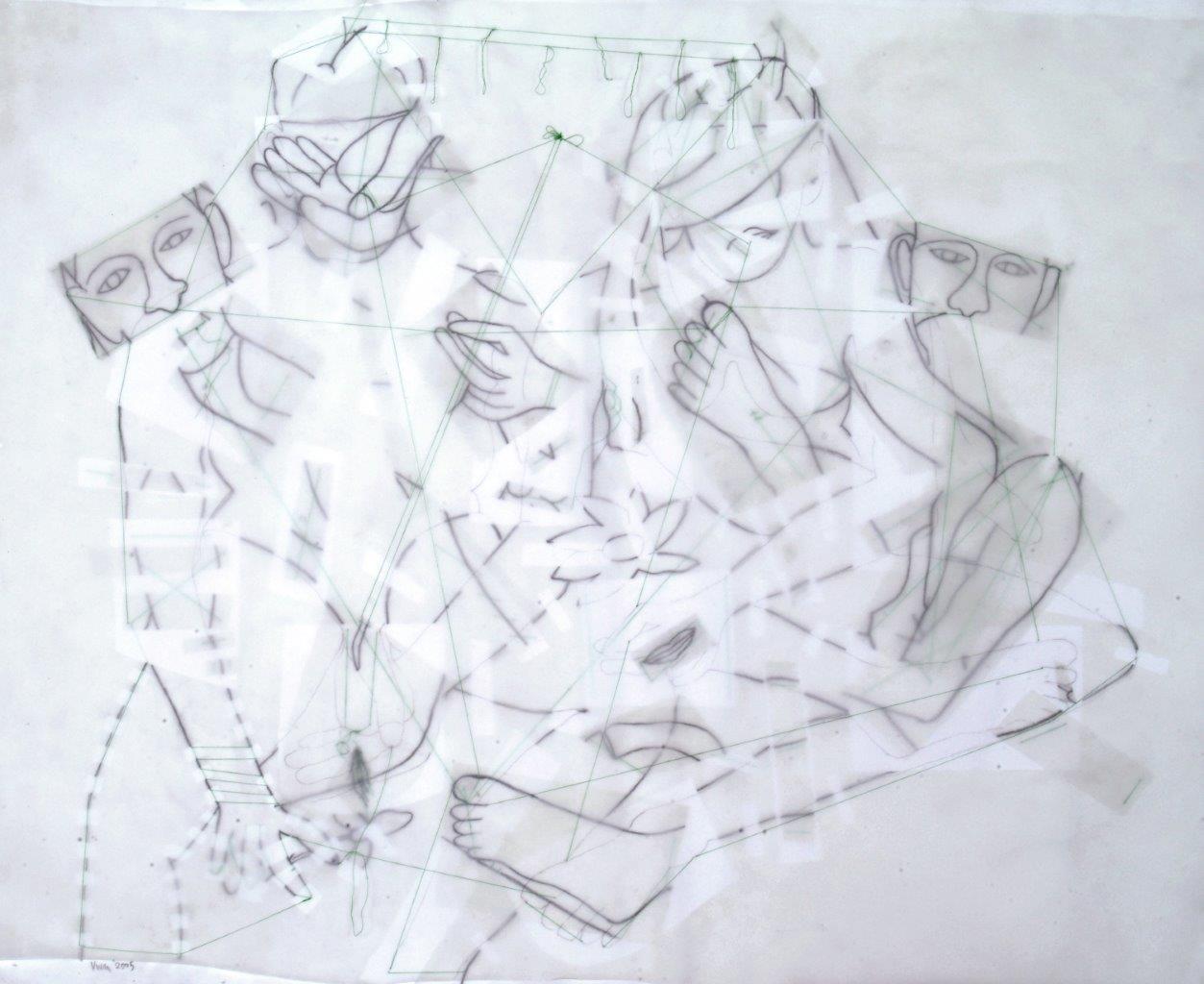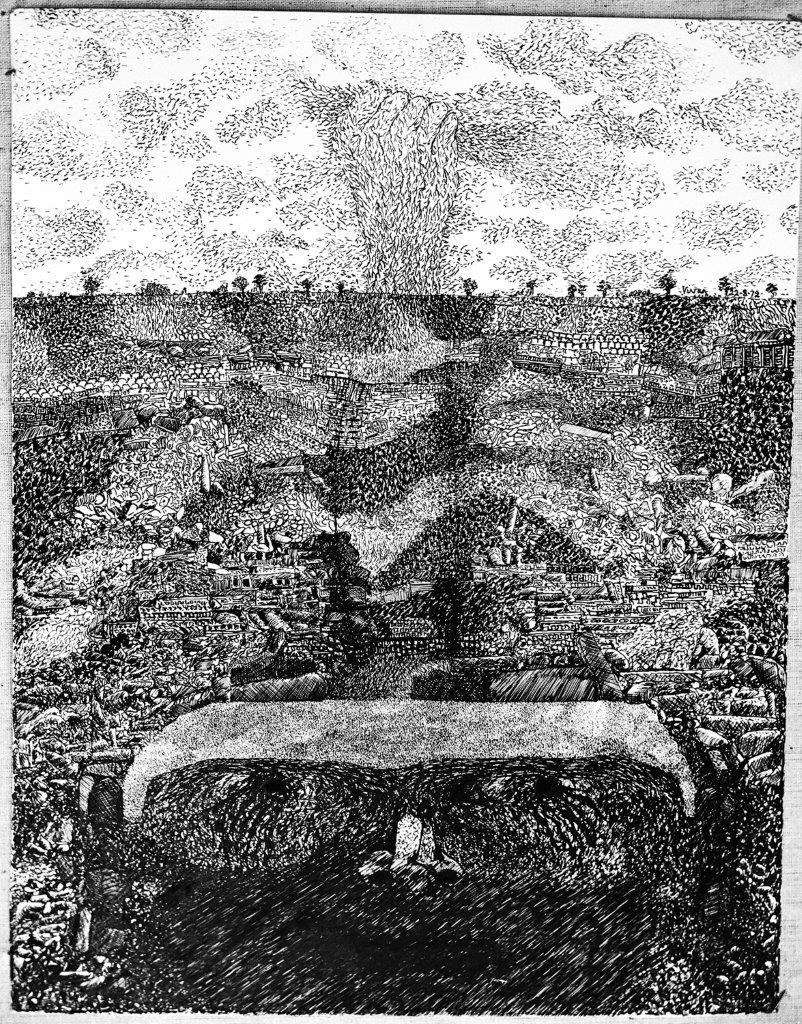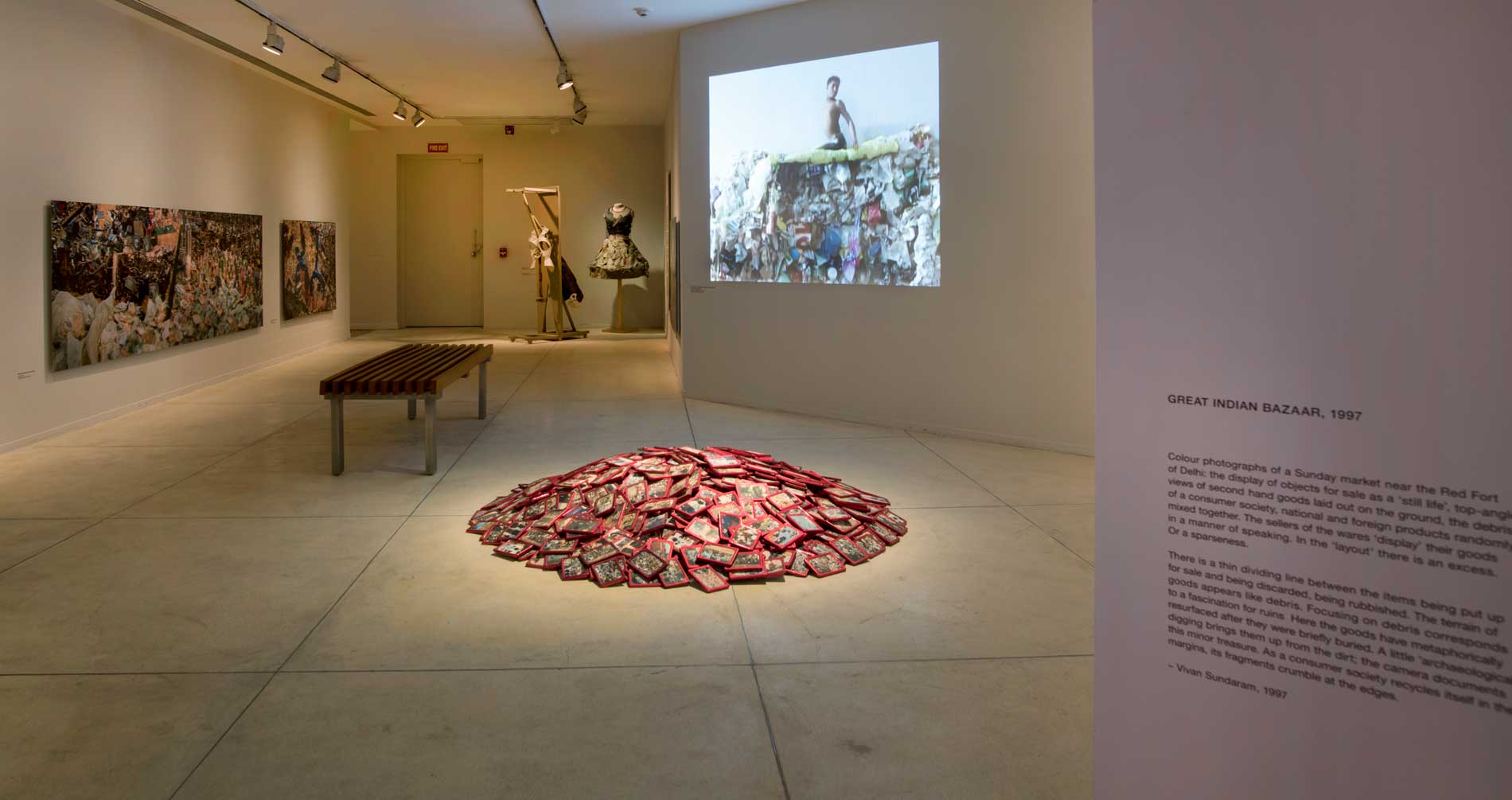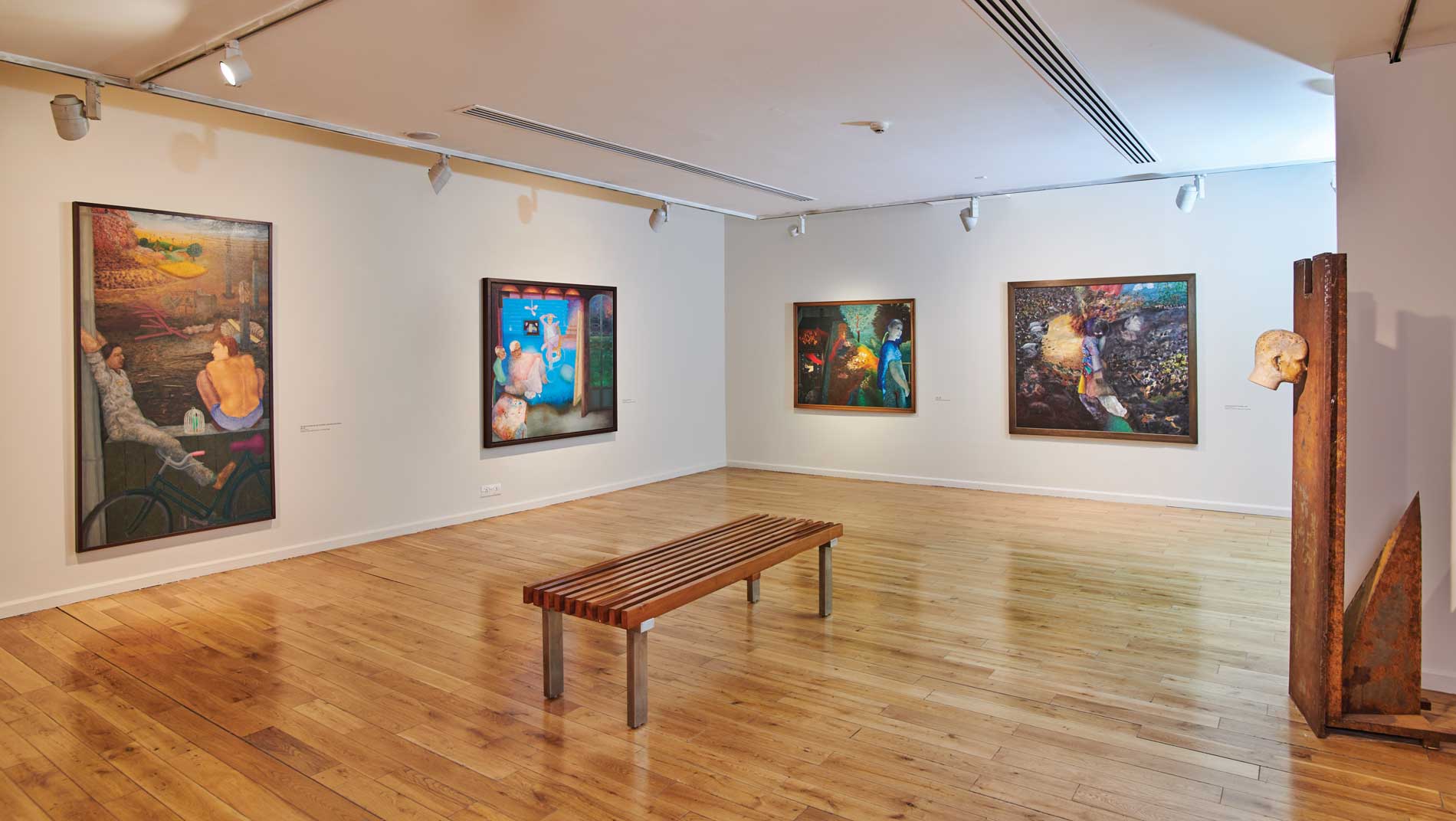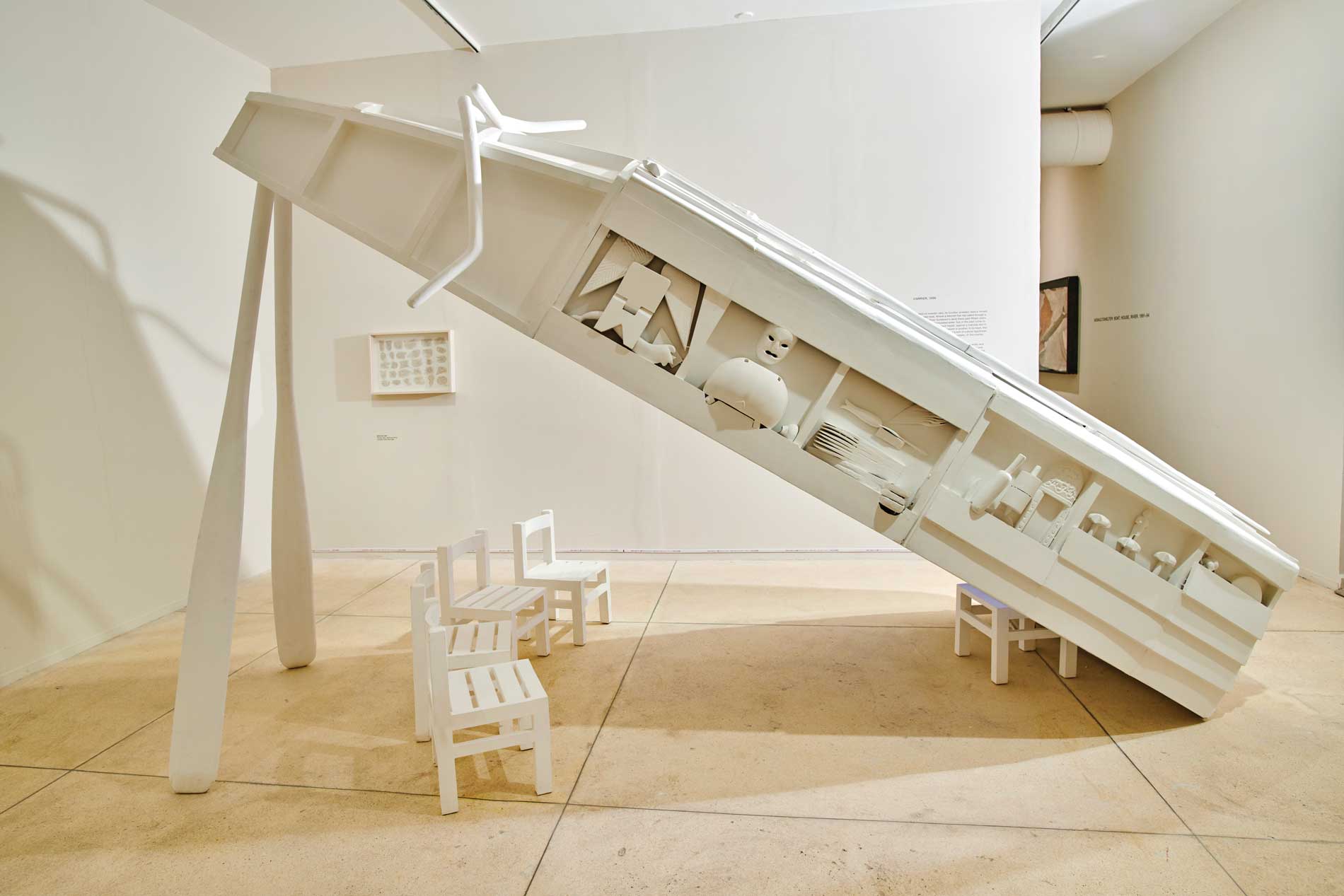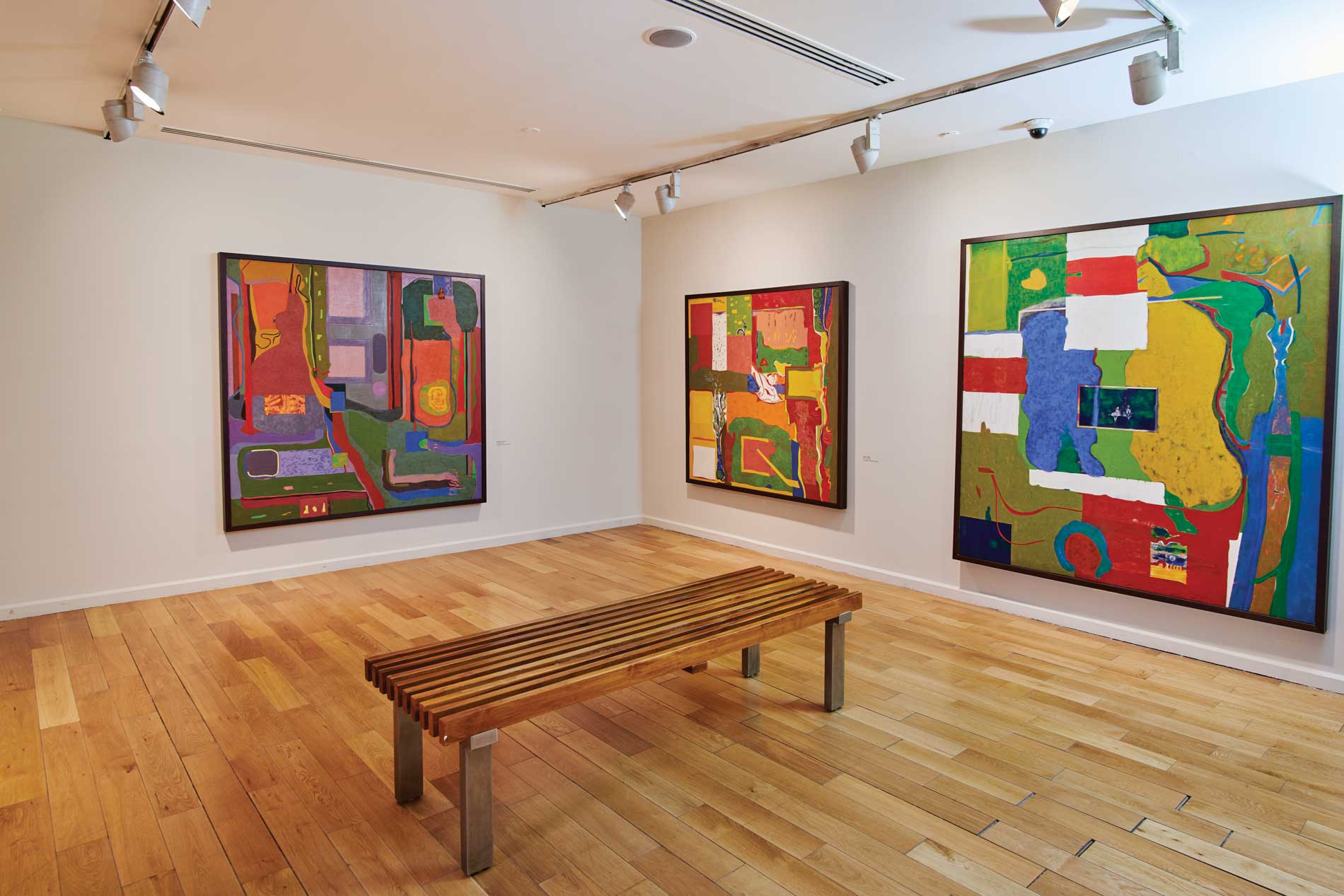- Home
- KNMA, Saket, Delhi
KNMA, Saket, Delhi
Kiran Nadar Museum of Art is pleased to present its first series of small exhibitions ‘Young Artists of Our Times’ curated by Akansha Rastogi, Senior Curator, Exhibitions and Programs. The series of exhibitions will unfold from September 2019 to March 2020, exploring different artistries, forms of attentiveness, indulgences and ‘transformational energies’ of youthfulness as a place, which is restless yet lazy, ‘too slow and too fast’, ‘rigorous and uninterested’.
KNMA commissioned artistic research and project ‘Smells of the City: Scents, Stench and Stink’ by Ishita Dey and Mohammad. Sayeed in 2018 as part of ideation and thinking around museum and the city and urban ecology. ‘Smell Assembly’ thinks through Dey and Sayeed’s year-long project, and brings together walks, collections and annotations of smells from three sites in the city: Majnu ka Tila, fish markets of Chittaranjan Park, ittr shops and spice market of Old Delhi. The exhibition follows trails of smell-work of Sakha cab drivers, Shahri Mahila Kamgar Union, sanitation workers, smell-workers of Gadodia market, manual scavengers, ittr makers and associated clusters.
According to curator Akansha Rastogi, “Smell Assembly opens an anthropologist’s field diary in a contemporary art museum. It puts into focus the sensorial body as well as a researcher’s body purposefully wandering in the city, a body that maps as well as carries smell, as Ishita Dey and Mohammad Sayeed attempt a phraseology or elaborate on the structure of smells and their naming. The exhibition introduces a parcha from a fictional smell-workers union that re-imagines smell as the primary basis of reorganizing work and rate cards, and further invites to play and find one’s own temporary disposition or mizaaj through a smell game. Each collected smell translates into a micro-site with this spatial thinking and processing of research in an exhibitionary form, multiplying or displacing the primary sites of research and transporting viewers to various landscapes and memory-scapes through olfactory experience.”
Ishita Dey and Mohd. Sayeed’s Note:
“Smells surround us. Sometimes we can recognize one from the other. But mostly we can’t. A little subtle and they are ignored altogether. A little louder and they become intimidating. People have their own smells. So do houses. Streets too. And the cities, cities are known by their smells – different for different areas and changing with the time of the day and even seasons. But, how much do we know about smells. Do we have enough words to talk about them? Surely we can distinguish some by their names. But most we know through some or other associations. Smell of this or smell of that. As if cultures never thought of having dedicated words for distinct smells. Smells are intimate. They are like whispers, hence the emphasis on subtlety. To let a smell go wild is to shout out a secret in public.
When we know the smells through their associations, often they are material things. We can smell fear. To be at home in a city is to be surrounded by reassuring smells. Can smells express the abstract sense better, giving it a material touch, or whenever we speak of smells we are always speaking of the figurative?
Smells help us to navigate through nooks and corners of every city and Delhi is no different. One of the challenges that city’s planners face is to keep the city smell free. In this context it would be important to remember Delhi’s tryst with closure of industrial units, shift from diesel and petrol run automobiles to compressed natural gas or constant debates on the ever increasing height of city’s landfills. Amidst these debates, what is missing is how smells are felt, expressed through human – non-human interaction.
There are two related questions that we want to explore. First one relates to the representation of smell. If one cannot record a moment of smell, to come back to later or, let’s say to share it with a friend, what are the ways, through which, we remember them or recognize them? Is it possible to translate smells in other mediums–visual, aural, language–in order to understand to what extent the smells have a bearing on contemporary urban life. How do smells represent the metaphorical sense of being in the city and how smells themselves can be represented in search of what is hidden from visual and aural grasp of the city. Secondly, how would an olfactory map of the city look like and how does it express the social? Can social relations be expressed in terms of control over one’s own and surrounding smells? Who has the control over its perpetuation and expression, and who has to live with it and under what condition. How do urban dwellers navigate the inescapable olfactory map of the city?”
The exhibition over the edge, crossing the line: five artists from Bengal continues its showcasing at Saket, after opening early January at the Noida branch of the museum.
Continuing the extensive explorations of different art movements, regions and artistic ideologies within South Asia, this year KNMA presents in-depth oeuvres and artistic inclinations of five modern masters from Bengal: Ganesh Pyne (1937 -2013), Meera Mukherjee (1928 – 1998), Somnath Hore (1921 -2006), Ganesh Haloi (b.1936) and Jogen Chowdhury (b. 1939). Coming from various parts of Bengal, their visual vocabularies reach maturity during 1970s and 1980s, with the city of Calcutta emerging as an intersection point. The social and political changes, witnessing and observing major occurrences like the Bengal famine, the Tebhaga movement, the Bangladesh Language Movement, the Vietnam War, and avant-garde mobilization in the creative disciplines of literature, cinema and theatre, has shaped their individual artistic styles and preoccupations. The chronological radius of the exhibition spans more than five decades from 1960s to early 2000s, showcasing more than two hundred artworks from KNMA collection and loans from artists and private collections.
The exhibition pursues the intensity and the edge at which these five practices seem to be located. It tries to look through the traces of what has remained or distilled through long duree process of artistic gesticulations on canvas or paper. Delving into the empirical and the subconscious, these five modern masters have created extraordinary visuals, meticulously ossified from the worlds seen and sensed. They take viewers on a journey to the unknown, and speak of both, longing and suffering, sometimes through direct representation of the real, and at times with allegories and obscure symbols. The exhibition oscillates between scenes soaked in half-light, colour fields, unbroken lines or contours of a figure, decay and poetic distortions, as if almost hiding the corporeal body and paving paths to view the body of a landscape.
Collective anxieties and turmoil surface often in interesting ways in this selected body of work. The exhibition explores how the transfigured, charged and complex imagery challenges rigid perceptions of viewing. With approximately thirty to forty artworks of each artist, the exhibition takes one through their unique journey from different phases of aesthetic formulations: from being chroniclers, appropriating the roles of narrator, illustrator, image makers and activists to being myth-shapers. A diverse range of techniques, mediums and configurations: paintings in tempera, gouache, watercolours, mixed media, ink and pastels, woodcut, lithography, etching and paper pulp prints and sculptures casted in bronze and plaster of Paris constitute this presentation.
For instance, Ganesh Haloi’s untitled gouache works punctuated with sporadic yet minimal colour patches and hyphenated lines, transport the viewer to imaginary pasturelands. These transitory landscapes hold the memory of real pathways and evoke a sensory and spatial experience of movement. In an almost contrasting rhythm are Ganesh Pyne’s quick jottings in pen and the multi-layered tempera works like Death (1975) or The Swim which falls between the real and the mysterious. Pyne, who has always been immensely drawn to water, creates these layers of dark undercoats of paint and then applies lighter colours to create mysterious effects, invites us to take detours from the surfatial. Meera Mukherjee’s sculptural explorations of myths and decorative patterns, modelled with a certain solidity of wax, recreate her observations and learnings in bronze-casts techniques learnt from living with the craftsmen of Bastar. Her sculptures like Nagardola (Ferris wheel) or Srishtidepict the cyclical rhythm of human survival.
In Jogen Chowdhury’s Gulabi Takia (1977-80) made in ink and pastel on board, or A Couple (1984) painted in ink and pastel on paper, one sees the tender or uneven contours of human figures made with intricate crosshatchings. They lack firmness as if mirroring the deformation of societal structures. Somnath Hore’s figures, studies and symbolic open wounds tend towards minimal forms. He pulls our attention to the emaciated bodies who are delicately etched between hunger and fasting. His Wounds (1973), the paper pulp prints, though echo the memories of violence in Vietnam war, are reflections on human existence and the sufferings from man-made wars and scarcities.
Poetic, satirical and political commentaries of
Gaganendranath Tagore, Chittoprasad, KG Subramanyan and RK Laxman
‘Common Course’ is a zestful and humorous ride through caricatures, satirical, poetic and political commentaries of four artists of modern India. The exhibition brings forth the stereotypes, contradictory/ critical impressions, resistance, bold alerting signals to civic and political consciousness and moral crises of colonial India as marked in the political posters of Chittaprosad and commentaries of Gaganendranath Tagore on the topical and social history of Bengal. These along with KG Subramanyan’s incisive and stinging poetics on the political drama that unfolded during the 1970s Emergency period and the recurring character of the common man in RK Laxman’s cartoons, interprets and voices opinions on political events and the politics of everyday in post-independent democratic India.
The exhibition includes original lithographs and collaged pages of two seminal books. First one is Gaganendranath Tagore’s album of caricatures ‘Adbhuta Loka (Realm of the Absurd) made in 1917, which captures the strange deformities, social negotiations and transformations happening in colonial city of Calcutta. He draws on the urban stereotypes of the babus, priest, aristocrats, and anglicized bhadralok that he called as ‘hybrid Bengalis’ who are represented in his works as young men half-clad in Indian dhoti and half in European dress. In the introduction to his another album ‘Virupa Vajra/ The Wry Bolt: Play of opposites’ he wrote, “When deformities grow unchecked but are cherished by blind habit, it becomes the duty of the artist to show that they are ugly and vulgar and therefore abnormal." The second book is ‘The Tale of the Talking Face’ by KG Subramanyan. The original collages not only give an insight into the workings and artistry of the master-storyteller and pedagogue Subramanyan, but also the satiric verses that lead us onto the threat of totalitarianism looming through the autocratic ruler/protagonist of his tale. Published in 1989 by Seagull, KG Subramanyan started work on the series in around 1975 when India was under the emergency rule. An array of 43 paper collages constitute the template, building and holding the tension through the black and white spatial registers of events layered with multiple focal points of the narrative.
Treading across varying nomenclatures and understanding of the role of an illustrator, graphic novelist, cartoonist and agitated political resistance, the exhibition reflects on the rich visual syntax and narratives rooted in the conflicts and contradictions of the respective times. It highlights the practice of chronicling social, political and cultural changes in the society through the myriad ways of telling a tale. ‘Common Course’ cuts across genres of popular prints and book illustrations, subverting, parodying, lampooning with characteristics of pictorial journalism, exaggerated physiognomies of protagonists, readings of the political ties and social tensions, common set of criteria or the rising collective effort of the oppressed. ‘Common course’ is a play on the assertion and rights of the commons.
RK Laxman as an artist, could be hailed as the vidushak or jester of modern Indian Politics. The protagonist of his cartoons ‘the Common Man’ is a curiously omnipresent bespectacled middle-aged balding man in his modest dhoti and checkered coat, who silently witnesses the humdrum from a tiny corner of the front page of the daily newspaper. This quintessential ‘Common Man’ bears familiarity with anyone acquainted with the daily affairs of Indian nation. From the prolific oeuvre of RK Laxman, KNMA showcases a rare feat of cartoons where listening, observing, sharp analysis and political commentaries is performed on the most crucial events of the nation. When showcased as a tableau, the immediacy of his swift brush strokes and stinging nature of his humour while unrobing the follies of his peers is palpable. They take you on a tumultuous journey of a newly independent country, its various domestic and international vagaries, and hypocrisy of its leaders and the scandals from 1950s to 1980s. He caricatured almost all significant political leaders and popular public figures of his time, few of the iconic ones are part of the exhibition.
The intense pen and ink drawings and political posters of Chittaprasad from the 1940s and 1950s document and comment on both the world and national political scenarios. There is no meddling or double-speak with the ideologically charged political art of Chittaprasad, it cuts straight and hard just like a hammer and a sickle. He critiques imperialist domination, British India’s repressive policies, the unity of peasant and workers’ union in the face of the trinity of sarkar, sahukar and zamindar, the Royal Navy mutiny, the communal politics of partition, to the challenges, tyranny and social evils of post-independent India. Chittaprasad in his drawings demystifies the ‘politician-capitalist nexus’ manifesting as neo-liberal free trade propaganda to its bare bones of exploitation and growing rich-poor divide. Yet we see that somewhere there is a dream of a utopic future, comprised of peaceful and self-sustained villages with plenty food and work, unfurling under a hoisted communist flag. The regimes have changed, the role of Communist Party is debatable in times today, and the monsters of neo-liberal economy have grown beyond comprehension. Yet Chittaprosad’s artworks adhere to a recounting of the buried truths of a troubled history of India’s development, albeit drenched in ink and strokes of compelling figuration of the common citizen from the margins, upon whose aspirations it has pillared its growth on.
Arpita Singh (b. 1937, Kolkata) is one of the most significant women artists in India. This retrospective exhibition at KNMA gives an extraordinary opportunity to view six decades of her art practice. Engaging with her complex view of the world through her seminal paintings, drawings, sketches and watercolours from various public and private collections, the exhibition focuses on her long and singular commitment to the medium of painting and its evolution into a personal expressive language.
Artists: Sreejata Roy and Mrityunjay Chatterjee
With Hoor Kareemi, Fariba Azizi, Rabiya Taraki, Mari Saidi (Afghanistan); Aya Nazari (Iraq); Gloria Ntsoni Badidila (Republic of Congo); Safa Mutombo (Congo Democratic Republic); Sirie Senai, Jaana Berhane (Ethiopia); Ladan & Shuba (Somali); Dolly Singh (Bihar); Laxmi Chhetri, Radha Sharma (Nepal)
KNMA is pleased to present the exhibition ‘What Place is Kitchen? What Place Community?’ which completes a year-long project ‘The Khirki Living Lab’ by Revue (Sreejata Roy and Mrityunjay Chatterjee). The community kitchen in the Khirki Living Lab has connected migrant women from different geographies living in the neighbourhoods of Khirki and Hauz Rani in South Delhi. The project enabled a dynamic network of social relationships and friendships through the daily act of cooking a wide range of cuisines in a common kitchen, sharing recipes and eating together.
The exhibition begins with an outlining of the three kitchens/studios in Khirki Extension that the Living Lab inhabited by an amorphous group of migrant women (along with their children) from the Middle-east, different countries in Africa and Asia, who met regularly, cooked over ninety-three recipes and conversed over meals. And slowly it reassembles the processual that occurred over a period of one year: the list of around ninety-three dishes, different songs and conversations, glossaries of foodgrains and spices, annotations and stories, recipes from festive celebrations, traditional preparations from grandmother’s diary and adaptive recipes from food-scarce and conflict-ridden zones. Also, memory drawings, diaries, napkins along with hand-drawn cartographies of urban villages Khirki and Hauz Rani from where ingredients were sourced for various Pop-up Kitchens.
Artists Sreejata Roy and Mrityunjay Chatterjee says, “Our method at the lab was to rotate the tasks of food preparation, i.e., to have one dish from each cuisine tradition cooked daily, often focusing on a common ingredient or a theme, and then to present these dishes collectively at a monthly Pop-up Kitchen at different sites, where local people are invited to share the meal and encouraged to interact with the project members. Within the lab, pragmatic discussions about particular traditional foods seamlessly expand into wider narratives about displacement, migration and memory, and how these variables compel resettled families to willingly/unwillingly adopt new food habits, occasionally give up old ones, and adapt embedded, hereditary culinary customs to new realities.”
Not all members of the Kitchen Living Lab speak each other’s language, yet are able to actively communicate vis-à-vis essential cooking information and emotional experiences associated with their traditional foods. As speakers of Arabic, Dari, French and various native dialects from their places of origin, they rely on an intuitive, flexible, amalgamated vocabulary of words, gestures, facial expressions, similar regional socio-linguistic codes, digital media and idiomatic translations by those among them who do have some broader knowledge of the various languages in use within the group. They also frequently draw from a lexical cache common to the different languages, and this enables fragmentary utterances to be layered and honed into comprehensible meaning.
According to curator Akansha Rastogi, “The circuitry, negotiations, sharing and the models of living proposed by migration suggest a non-rigid or fluid sense of the word ‘community’, attentive to its temporariness, elasticity and the contradictions of forging one. This group of transient residents, passing through and living in Delhi, come from Somalia, Congo, Ethiopia, Iraq, Afghanistan, Nepal and Bihar, and through a creative invitation of cooking generate an affirmation that didn’t exist before.”
She further notes, “Over and over again I leap into this place, seemingly empty yet woven, the space in-between as the group sits around, which can usually be measured with threads of a daree or is at times clad in anonymity. As the interactions from the kitchens of Khirki migrate into artistic thinking and a contemporary art space, these daily mundane actions perhaps lose some of their transformative potential. Yet also become a means for recalibrating micro-collectivities which are formed out of displacement, where food could be is a tool to blend different worlds, cultures, tongues and geographies.”
The project ‘Museum of Food, A Living Heritage’ by Revue is supported by Prince Claus Fund and British Council, and organised in collaboration with BOSCO Delhi Initiatives UNHCR and Kiran Nadar Museum of Art. The exhibition opens with live music performances by Rous Band, Aya Nazari and Noella, followed by delicious home-cooked snacks from Afghan, Iraqi, Congolese and Somali cuisines.
The Kiran Nadar Museum of Art (KNMA) is delighted to present the opening of exhibition ‘Jangarh Singh Shyam: A Conjuror’s Archive’, co-curated by Dr. Jyotindra Jain and Roobina Karode at KNMA.
KNMA has expanded its curatorial and exhibition program in the last few years. Since 2017 a special exhibition category has been introduced, to open up discourses around preceding pre-modern, traditional and indigenous art practices, and critically examine their influence and appropriations in urban contemporary art. This year the exhibition on artist Jangarh Singh Shyam problematizes ‘the tribal’ and ‘the contemporary’. Jangarh was born into a Pardhan Gond family in the village of Patangarh in Mandla district, of Eastern Madhya Pradesh. He is much discussed for his creation of a new style, which is named after him as ‘Jangarh Kalam’. A unique style when compared with traditional tribal art practices. Its initiation happened early when Jangarh met J. Swaminathan (who was then Director at Bharat Bhavan) during a talent scout. Jangarh’s primary subjects were sometimes Gond deities like Thakur Dev, Bada Deo and Kalsahin Devi and at other times were applique styled portraits of animals, trees, folklore imagery and landscapes of the place where he grew up, placed next to objects and entities from urban settings, like aeroplanes.
The exposition is enriched with works brought in on loan from government and private institution collections and many private collectors. The exhibits include paintings on paper and canvas, terracotta murals, digital prints of photographs, Jangarh’s letters, and reproduction of mural images and theatre posters which incorporated Jangarh’s art work.
A substantial showing in this exhibition of Jangarh’s works has come from The Museum of Art and Photography (MAP), Bangalore. Works from institutions such as Bharat Bhawan in Bhopal and The Crafts Museum in New Delhi are historically important as they were places where Jangarh worked on-site projects. Some in-situ murals will be reproduced for the exhibition. The book by Dr. Jain (who is a cultural historian and museologist), offers rare insight into the life and works of Jangarh Singh Shyam.
“This exposition is a witness to Jangarh’s excitement and angst, his hope and despair, which pulled him into a vortex of uncertainty and alienation from his familiar ground. His rise to fame, through the exhibition Magiciens de la Terre, at Centre Pompidou, Paris in 1989 followed by subsequent multiple commissions from different art entities, with his journey ending tragically, when Jangarh committed suicide in Japan at the age of 39. At a cursory glance while one may think he created the universe he knew, which was being amidst the flora and fauna in natural surroundings that were associated with his imagery, there are embedded stories, fables, anecdotes and myths that are unveiled beautifully by Dr. Jain”, mentions Roobina Karode, Chief Curator and Director, KNMA.
The ethos of the exposition at certain points resonate and harmonize with the spirit of the book on Jangarh and at other times take a self-determining course to generate unique visual experiences.
“Jangarh Singh, a young Pardhan artist with an inborn genius for drawing and painting and modelling … was “discovered” when the walls of his hut were found to be covered with paintings done by him”, J. Swaminathan once stated, to what Dr. Jain points out, “The term ‘discovery’ as applied to encountering works by indigenous or vernacular artists by ethnographers, art historians and what Jangarh would call sheheri (urban) artists further stresses the hierarchised binary between the two and, concomitantly, the power relation inherent to the dynamic between the invasive ‘discoverer’ and the passive ‘discovered’, more explicitly visible in the histories of colonial voyages and geographical discoveries”.
One of his works from the late 1980s depict a serpent supporting the animate earth on its head where the stylized form is shaped out of numerous dots. Jangarh introduced this entirely new style which generated a narrative instead of portraying a singular deity. Adding layers of chronicles to his subject, Jangarh often drew from the social and cultural changes that he observed around.
His earliest commission work from 1996, is a massive exterior mural covering 6500 square feet in Vidhan Bhavan, Bhopal, in which he was assisted technically by Ashis Swamy, a theatre associate and a trained artist from Santiniketan. This mural was the first of its kind done by Jangarh. He populated the pictorial ground with his gods, the vegetation and creatures embedded in his memory to which he added a colossal aeroplane and a leaping tiger. The vast and charming painterly space of the murals both predicted and determined the large scale of the images and propelled him to add more.
Another work depicting a young boy playing flute, done in acrylic on canvas from the mid-90s, is a rare painting. It talks of a young boy seated amongst animals under a tree playing his flute. The tree hosts birds, a beehive and a large cobra, which too appears mesmerised with the tune of the flute. The painting is unconventionally divided in diagonal spaces with in which the central protagonist, according to Jyotindra Jain could also be a possible representation of the artist himself.
Raised with powerful sensibilities that were shaped by his memories from Patangarh, a place which he left behind, Jangarh created, a huge body of artworks in over two decades. His works are inhabited by gods and demons, shamans and priests, birds and beasts and sometimes creatures that dwell in imaginations. Thus the entire realm of memories that had remained dormant in his mind came alive through his imageries, as response to the new and alluring space of the paper, canvas or the walls that ‘he turned into a vast and unique conjuror’s archive’, says Dr Jain.
'bauhaus imaginista' exhibition celebrates '100 years of Bauhaus' and is organised in collaboration with Goethe Institut, Haus der Kulturen der Welt (HKW), Bauhaus Cooperation Berlin Dessau Weimar and the China Design Museum / China Academy of Art (Hangzhou). (www.bauhaus-imaginista.org , www.bauhaus100.de)
bauhaus imaginista presents the exhibition Moving Away at the Kiran Nadar Museum of Art (KNMA) New Delhi. This exhibition focuses on how principles in design and architecture from the Bauhaus have been adapted, expanded and contested in different social and political contexts. These include the former Soviet Republics, India, North Korea and China. The title of the exhibition indicates how the migration of Bauhaus ideas was never a case of pure dissemination, but instead these ideas were accepted and rejected in relation to local conditions and against a backdrop of geopolitical change in the twentieth century.
Moving Away at the Kiran Nadar Museum, which was partly presented before in Hangzhou (China) with the same title, brings diverse Bauhaus genealogies together in an exhibition for the first time. Through a series of case studies it becomes possible to compare different responses to the Bauhaus, filtered through cultural translation and grounded in the conditions of a particular locality.
Marcel Breue's filmstrip collage ein bauhaus-film. fünf jahre lang (a bauhaus film, five years long, 1926) provides the exhibition’s point of departure. It visualizes the development of the chair from crafted object to industrial prototype, towards a future where designed objects become obsolete. Breuer wrote that design must adapt to changing environments, which could be read as an argument against a universal set of forms and methods. Breuer’s collage was published in the Bauhaus Journal No 1, and the magazine’s contents introduce the basic principle of Bauhaus design, which go beyond individual objects to think about the building as a whole. This meant the development of new designs for cups, chairs, textiles, wall colours and flooring, through to campus architecture, houses and housing estates. The exhibition explores how these disciplines were integrated and related to the idea of social function and reform.
Following his politically motivated dismissal in 1930, the Bauhaus’s second director Hannes Meyer and seven of his students travelled to Moscow at the invitation of the Soviet government and worked there on projects, including designing educational facilities, interiors and housing schemes.
They conducted urban studies and undertook the large-scale planning of new town developments such as Orsk in the southern Urals. When under Stalin’s regime avant-garde ideas were rejected, several Bauhaus architects were imprisoned, and some were sentenced to death. Many left the Soviet Union, relocating, variously, to Europe, Asia or South America. Consequently, throughout the mid-twentieth century, in locations as diverse as Hungary, Chile, the German Democratic Republic and North-Korea, one could find Bauhaus-trained architects working as city planners and educators.
Two decades after the Bauhaus closed the HfG Ulm (founded in 1953) continued and contested Bauhaus ideas, including hiring Bauhaus masters and students to teach a version of the preliminary course based on visual and tactile training in colour and form. When HfG Ulm developed links with the National Institute of Design (NID) in Ahmedabad (founded in 1961) and the Industrial Design Centre (IDC) in Mumbai (founded in 1969), aspects of the Bauhaus preliminary course were incorporated into these school’s curricula, along with workshop-based training. From the perspective of post-war Germany, design was understood as a catalyst for economic reconstruction, and in post-independence India it was also seen as a potential tool for development that could utilise centuries-old Indian craft traditions and artisan skills.
Bauhaus ideas entered China through architects such as Richard Paulick, who was Walter Gropius’s assistant, and Wang Dahong (a student of Gropius). Both were hired to teach at the Architecture Department of St. John's University (established in 1942), which had a curriculum that directly referenced the Bauhaus model. After 1945, these two architects played an important role in the development of the Greater Shanghai Plan, a modern urban project based on rationalist principles. In the same period the renowned Chinese architect Liang Sicheng began a new approach to teaching architecture at the Tsinghua University in Beijing, which was strongly influenced by Gropius. Subsequently, during the Cultural Revolution Bauhaus ideas were attacked as bourgeois but in recent decades they have been rehabilitated in China.
The exhibition is part of bauhaus imaginista’s 2018 series of events celebrating the centenary of the Bauhaus school (1919-1933) in Germany, a project investigating the worldly relations of the Bauhaus across major geopolitical transformations of the twentieth century. The Bauhaus school radicalized design pedagogy and stood for a cosmopolitan vision, acting within the transnational network of the modernist movement. The Bauhaus hosted students and teachers from various world regions. Through flight and migration following its closure by the Nazis in 1933, Bauhauslers were in contact with other modern movements in Asian, American and African countries. Over the course of 2018, artistic directors Marion von Osten and Grant Watson—in cooperation with a team of international researchers, artists and designers—have developed a research project, including four separate exhibitions in China, Japan, Russia and Brazil, complemented by discursive events in India, the United States, Morocco and Nigeria, held in partnership with local art and design institutions and the Goethe-Instituts. From 15 March to 10 June 2019, the final exhibition bauhaus imaginsta will be on view at Haus der Kulturen der Welt, Berlin (HKW).
KNMA is delighted to present an exhibition of photographs of Swiss photographer Walter Bosshard (1892–1975), which are being seen in India for the first time. This exhibition is co-produced by Fotostiftung Schweiz (Winterthur) and Critical Collective (Delhi), and brings together 51 of Bosshard's iconic portrays of Gandhi and Mao. The original negatives have been digitized in Switzerland in order to produce high quality exhibition prints in India. Exhibition also includes a 1921 silent film on Mao shot by Bosshard.
Seventy years after the assassination of Mahatma Gandhi in 1948, the photographs of Walter Bosshard sheds new light on the Independence movement, the salt march to Dandi in 1930 and the personality of its leader. Bosshard preceded the illustrious photographers Henri Cartier-Bresson and Margaret Bourke-White who came to India in the late 1940s to photograph the Mahatma, by documenting this first vital gesture of the Civil Disobedience movement.
A few years later he travelled to China to document Mao Zedong and the Red army training in the caves of Yan’an. Co-curaotrs Gayatri Sinha and Peter Pfrunder bring together this rare archive of Gandhi and Mao images at the Kiran Nadar Museum of Art.
The Swiss photographer Walter Bosshard (1892–1975) was a pioneer in the field of photojournalism. A master of both the word and the camera, he made a name for himself as a bridge builder between Asia and Europe, reporting on key political events and daily life in Asia in the 1930s. Today, his photographs and films are a rich source of information for understanding global history. Bosshard's archive is preserved by the Swiss Foundation for Photography in Winterthur (Zurich), a national institution founded in 1971, tasked with caring for the photographic heritage of Switzerland.
In a dream assignment by the Münchner Illustrierte Presse, Bosshard was sent to India to report on the growing unrest and the Independence movement. In March 1930 he started on an eight month journey of Asia; he crossed 20,000 kilometres by car, to numerous cities and countries, and came into contact with over 5,000 people of various backgrounds.
The highlight of his assignment appeared on 18th May 1930 when the Münchner Illustrierte published Walter Bosshard's story on Mahatma Gandhi. The cover of the magazine showed Gandhi deeply immersed in reading, his head leaning on his hand. Inside the magazine, the viewer encountered the Mahatma in intimate situations – while he ate onion soup, while he shaved, and even while he slept. Bosshard's unusual portraits were widely distributed and admired. The photographs challenged Gandhi’s own ambivalent attitude to photography, as Bosshard noticed. When asked for permission to take photographs, the camera-shy Mahatma replied: "I have sworn never to ‘pose’ for a photographer! Try your luck, perhaps it might even turn out well".
The impressions of his journey through India were published by Bosshard in his book Indien kämpft! in 1931.
From India Bosshard then returned to China. He had visited China in 1921, and made the first silent film on Mao Zedong, the emergent revolutionary. Living and working in China between 1933 and 1939, Bosshard photographed daily life, the bombing of Hankon and China’s nomadic communities. Most importantly he photographed Mao Zedong in the caves of Yan’an, the training of the Red army, Chiang Kai-shek and Soong Mei-ling.
Bosshard occupies a singular place in 20th century photographic history. Today nearly 90 years later, his photographs offer a compelling comparison between two dominant figures of Asia, Gandhi and Mao as viewed from a single lens. Photographs of the Dandi March and the training of the Red Army, the message of nationalism and the symbols of resistance that these leaders adopted, reveal salient aspects of Asia’s history.
Alia Syed | Amar Kanwar | Kausik Mukhopadhyay | Mithu Sen | Naeem Mohaiemen | Neha Choksi | Nalini Malani | Nandita Kumar | Ranbir Kaleka | Shahzia Sikander | Sheba Chhachhi | Shezad Dawood | Sonia Khurana | Sudarshan Shetty | Vibha Galhotra | William Kentridge
Engaging with videos or films in a dark or semi-dark space, where things come closer to life or create a world of their own, the presence of colour, touch, sound, movement, apparitions, light and shadow, draws one into a complex technological environment. One is moved by the potentiality of the mediums used by artists, their diverse and occasionally precarious themes processed through the intricacies of looped time and nuanced languages. The world of today is disenchanting and distraught, yet alluring and demanding, desiring poise and equilibrium.
The exhibition Delirium/Equilibrium brings together transitory and intermediary states of incoherence, anxiety and excess, amplified in the disorienting acts of gibberish noise speech, unsettling animated/mechanized objects, a dizzy virtual journey into the meandering paths of a landscape, echoes of long drawn political speeches and quiet inner struggles of seekers/protagonists. Varied durations, scale and approaches can be seen at play, ranging from a rare eight channel video installation, a forty-five feet long projection, an eighty-five minute long film to a twenty-four feet long table-top with kinetic objects.
The participating artists present poetic ambivalences and blurred visions of the present, broaching the subject of life, the depths of darkness, illuminating the need for a rewiring of the world. With isolated gestures, stand-alone episodes, sites of failure and mysterious realms, the exhibition offers a setting for a philosophical reading of the present moment, politically and socially.
KNMA is presenting this year, the first ever retrospective of eminent artist Vivan Sundaram, one of the most influential artists of his generation in India. This large-scale exhibition is an extensive showing of his multimedia practice, bringing together many of his rare and key works and experiments, reflecting on his take away from Modernism, elements from Pop and Kitsch, moving away from the centrality of painting to take a conceptual turn. There are around 180 artworks on display, which include drawings, paintings, sculptures, collages, photo-montages and installations created over a period of five decades. It showcases his early works such as the pop and kitsch paintings (1965-66), Macchu Picchu (1972) series of drawings, engine oil drawings and installation (1991) to his most recent co-authored projects 409 Ramkinkars (2015) and Meanings of Failed Action: Insurrection 1946 (2017). Most of his early works will be in the public view after a gap of almost thirty to forty years.
Titled after one of Vivan’s paintings ‘Step inside and you are no longer a stranger’ which is part of the Punjab University Museum collection, this eponymous exhibition invites a poetic step from the spectator. At times, a provocateur seeking participation and collaboration, and sometimes acting as an interlocutor, Vivan has continuously attempted or staged immersive situations and spatial structures for the viewer through his installations. It is the spectator that holds the centre. The exhibition is animated with gestures and narratives that address the topical, the historical and the personal, alongside marking the cusp of significant shifts in the history of modernism in India.
In his large installations such as 12 Bed Ward, River carries its past and 409 Ramkinkars on display in the exhibition, he traverses through the industrial landscape and discards, oil grids, things sourced from local flea markets and second-hand markets to fragile terracotta recasts of modernist-master-sculptor Ramkinkar Baij’s famous sculptures Santhal Family and Mill’ Call. The exhibition highlights Vivan’s acts of doubling and re-evaluating. References to journeys through repetition of the motifs of boat and a house as a shelter for the migrants or just the adventurous ones who have ventured far away. With his installations Vivan offers a temporary halt to the stranger he seeks.
Preparing for his Retrospective exhibition, Vivan Sundaram says: “This exhibition presents the themes I have engaged with, but it also proposes structures that hold things together in retrospect: via the work, the exhibition layout, and spectator itineraries. ‘Step inside and you are no longer a stranger’: the exhibition’s title reflects the conflicting dimensions of my practice.”
On the occasion Kiran Nadar, Founder & Chairperson, KNMA, says, “Vivan Sundaram’s exhibition marks another major moment in the eight years of institutional presence of KNMA. The retrospective of this scale and kind has led to loans from 42 private and public collections from all across the country and overseas. We are glad to present this rare and extraordinary feat of fifty years of work of this highly celebrated and influential artist, put together for the first time. We have taken up the daunting task of coherently presenting such a prolific and wide ranging oeuvre. It is a show which is going to be remembered for a long time.”


_0.jpg)
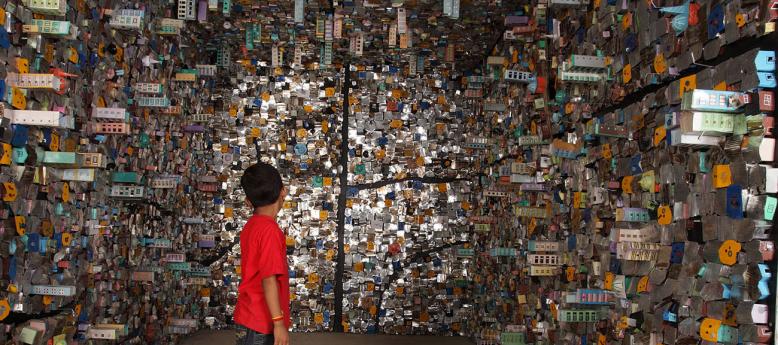


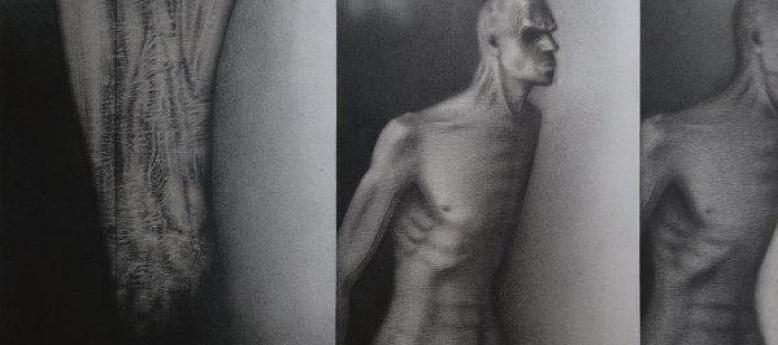

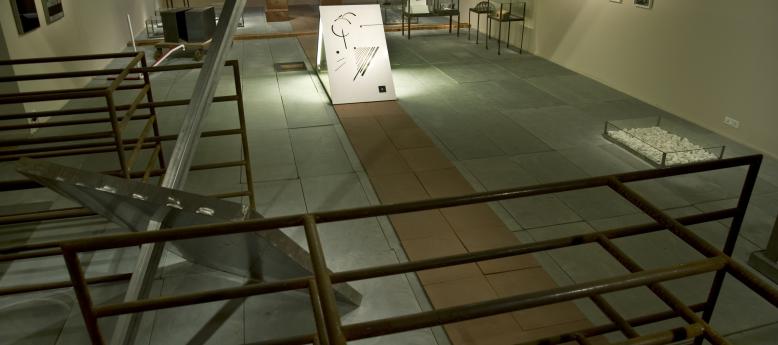
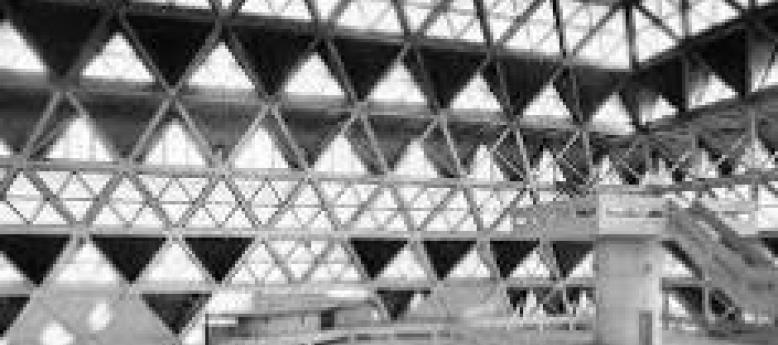
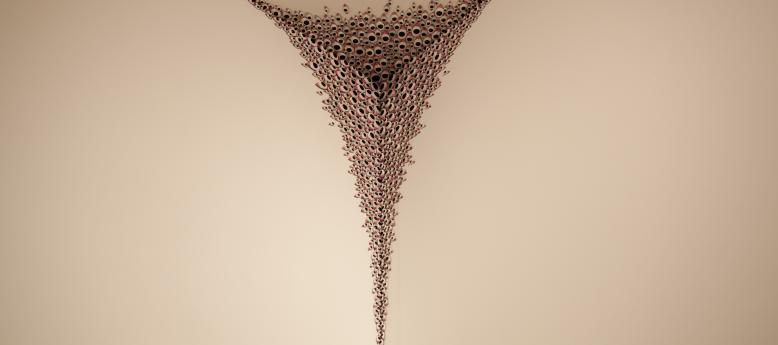


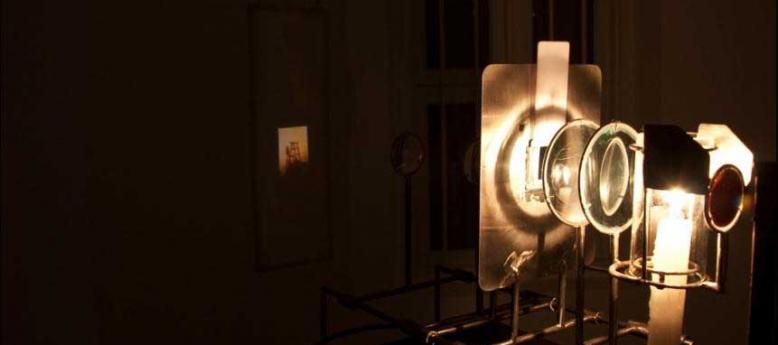



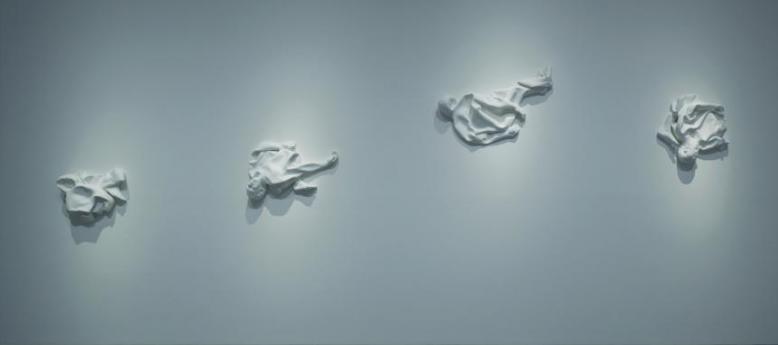




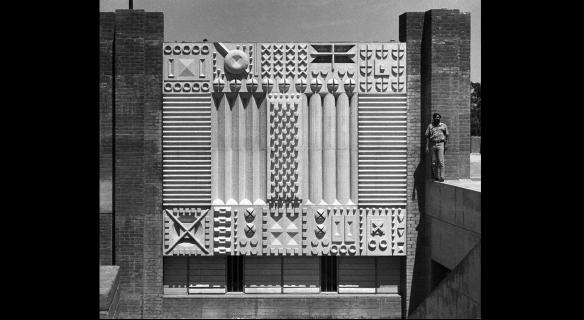







.jpg)



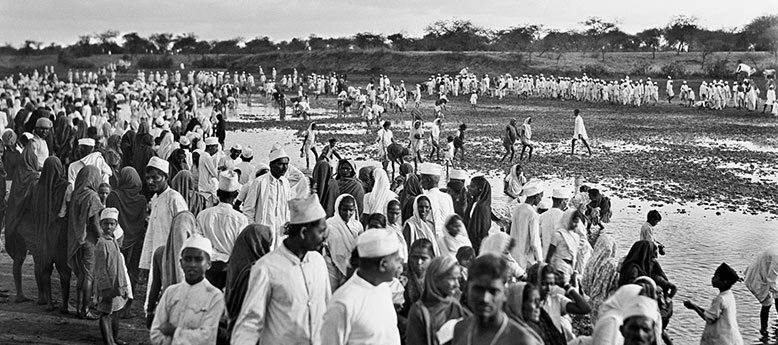





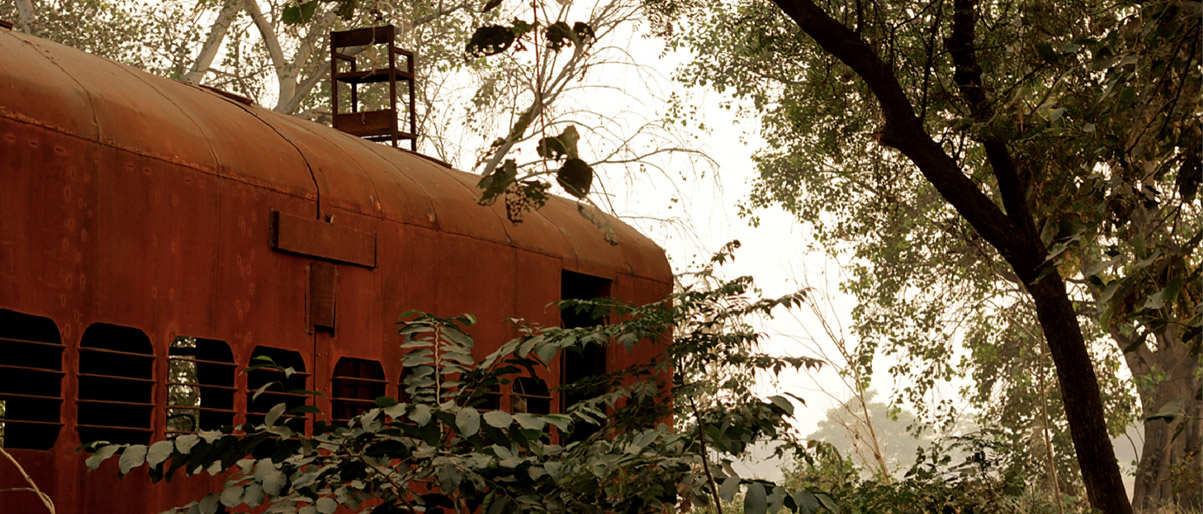
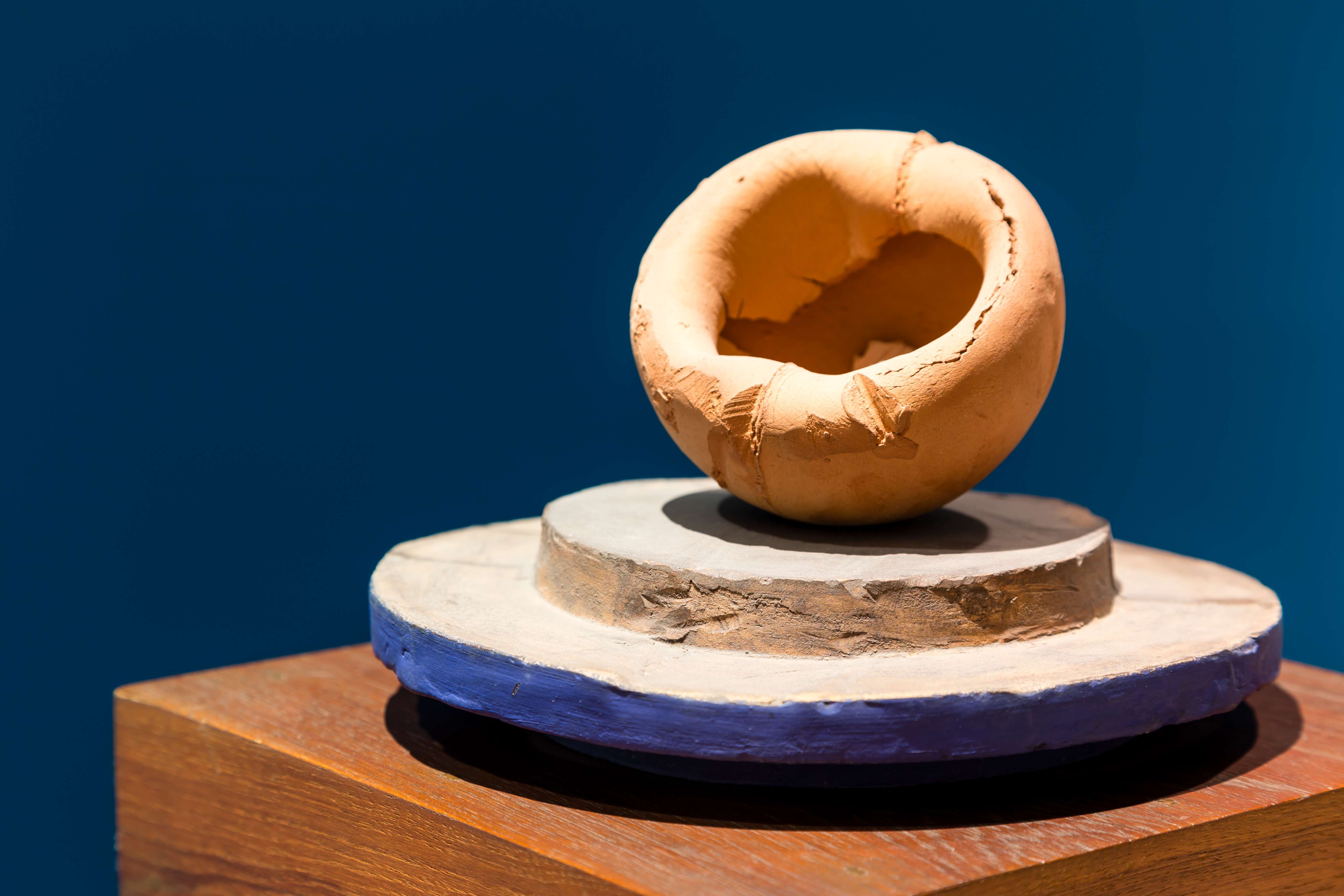

.jpg)





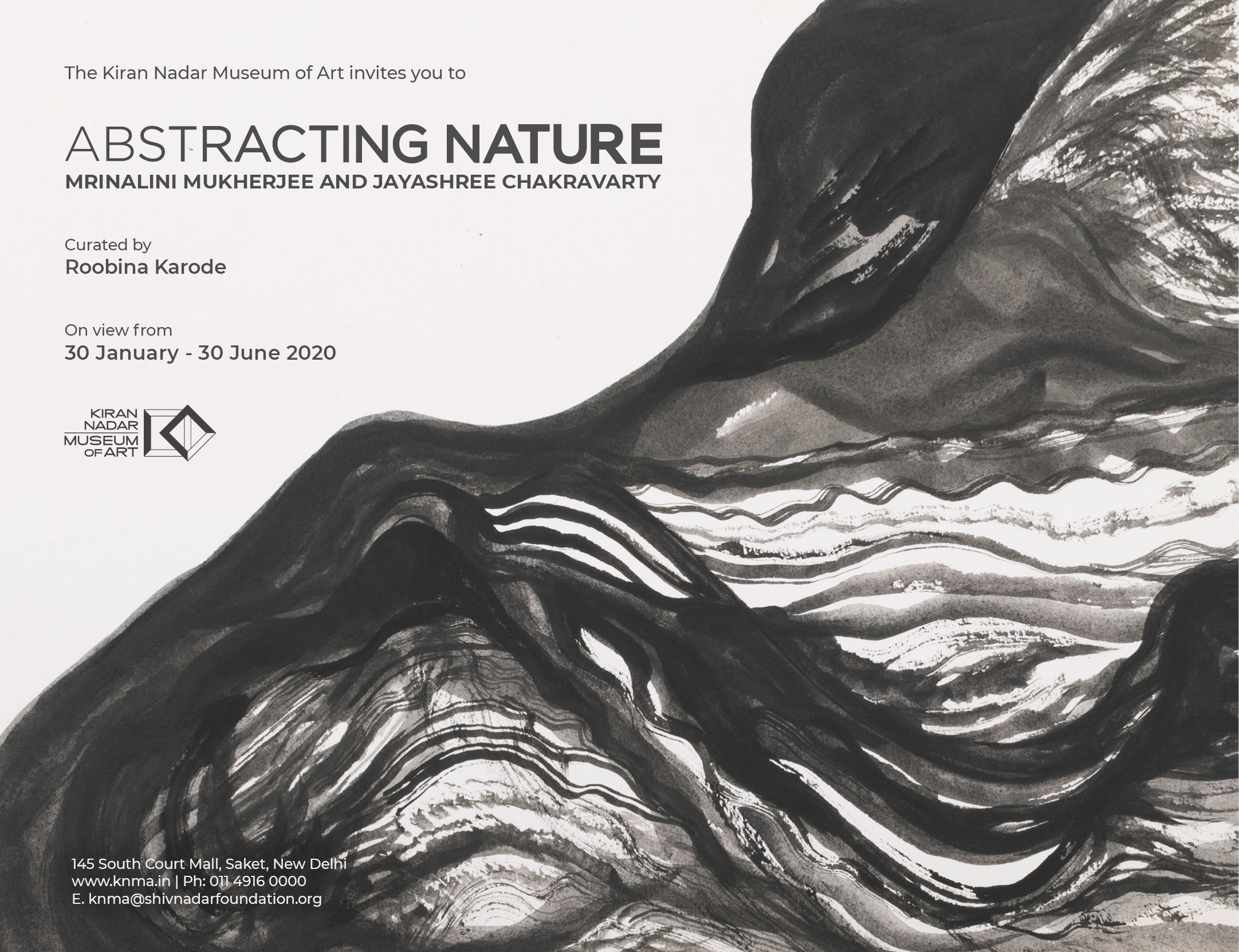
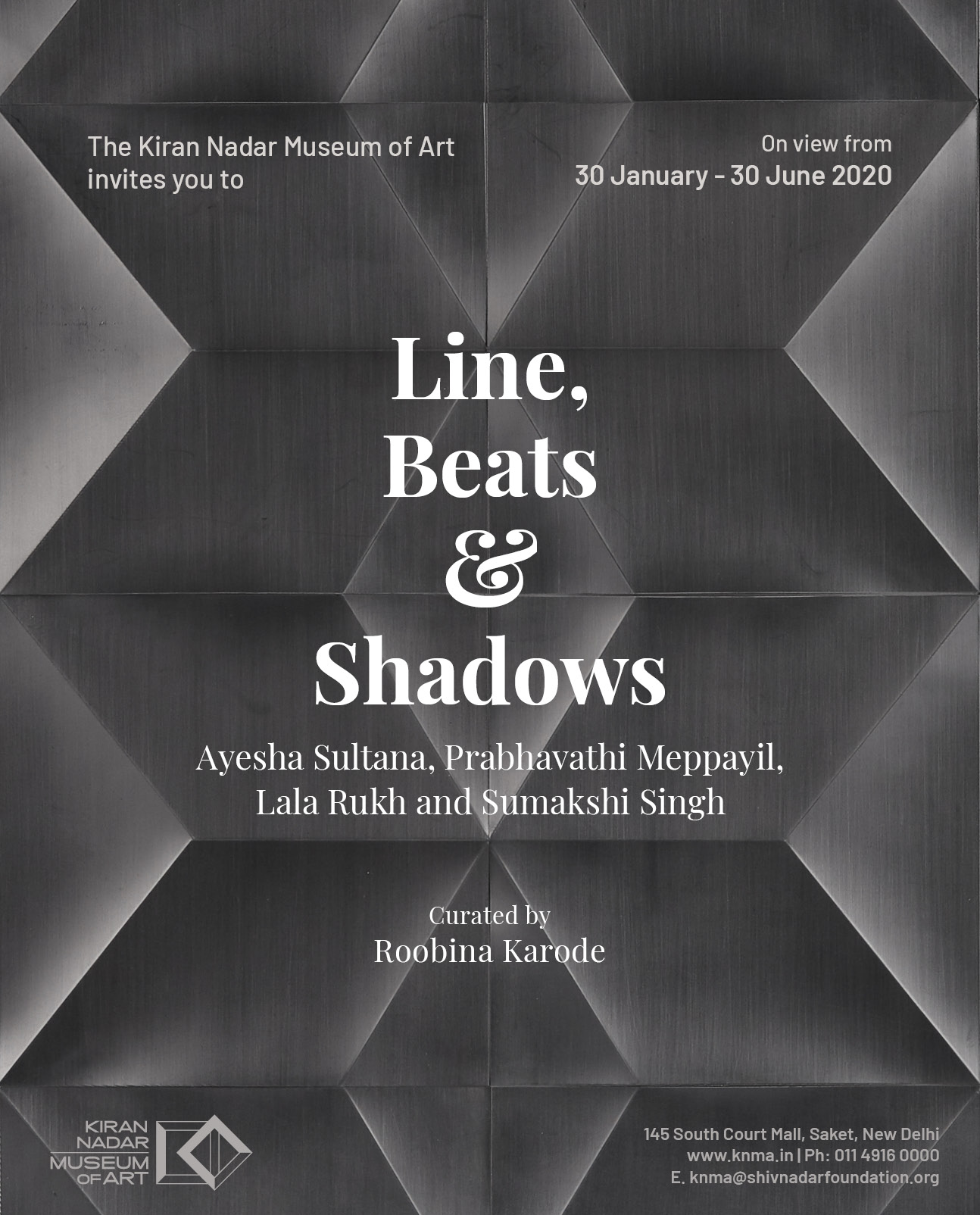
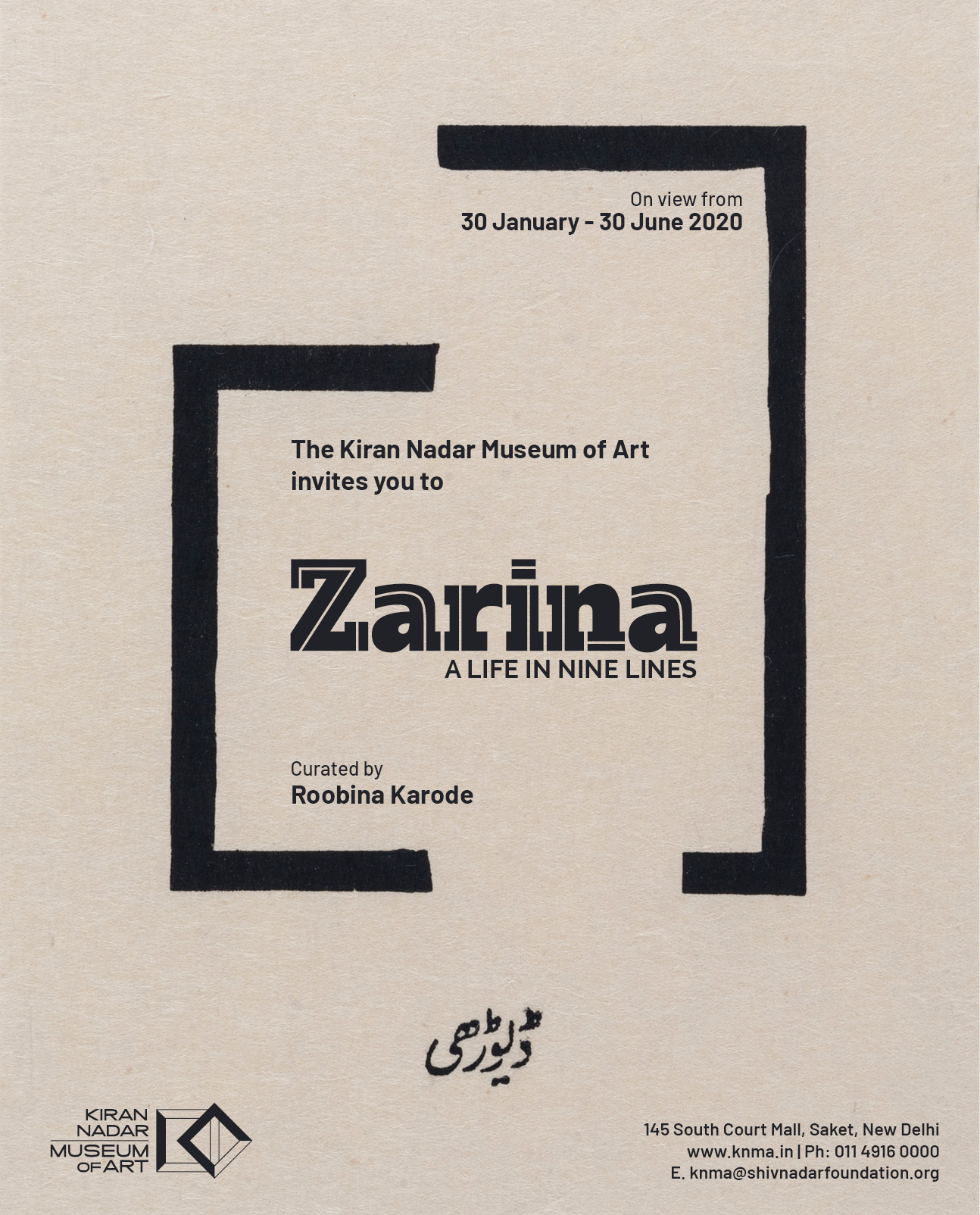







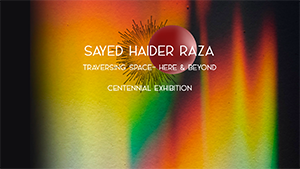


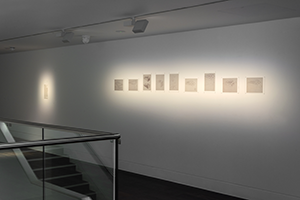
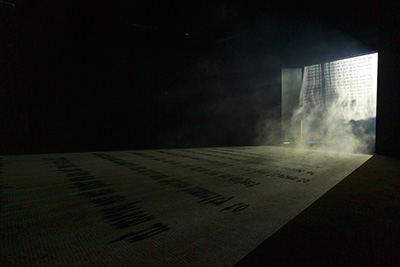
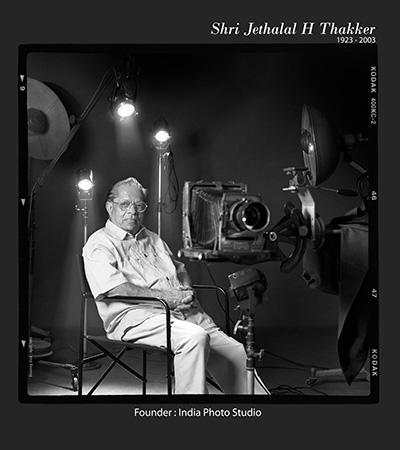
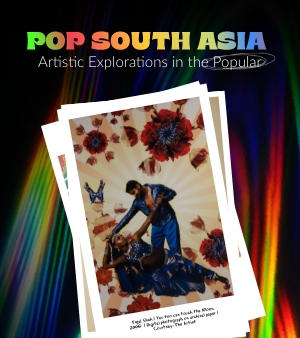




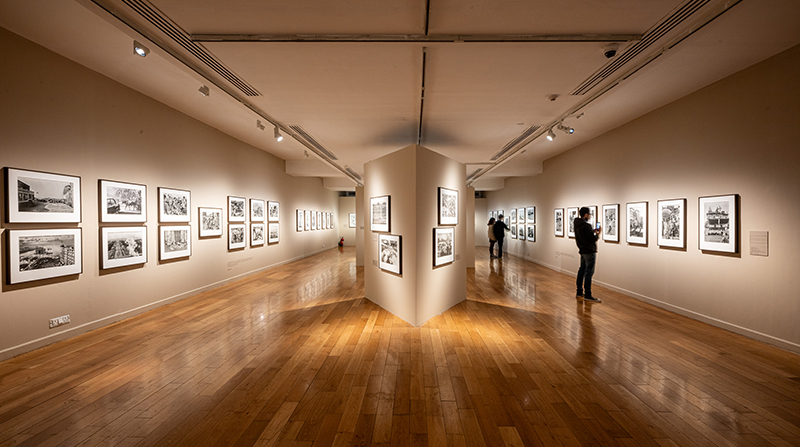
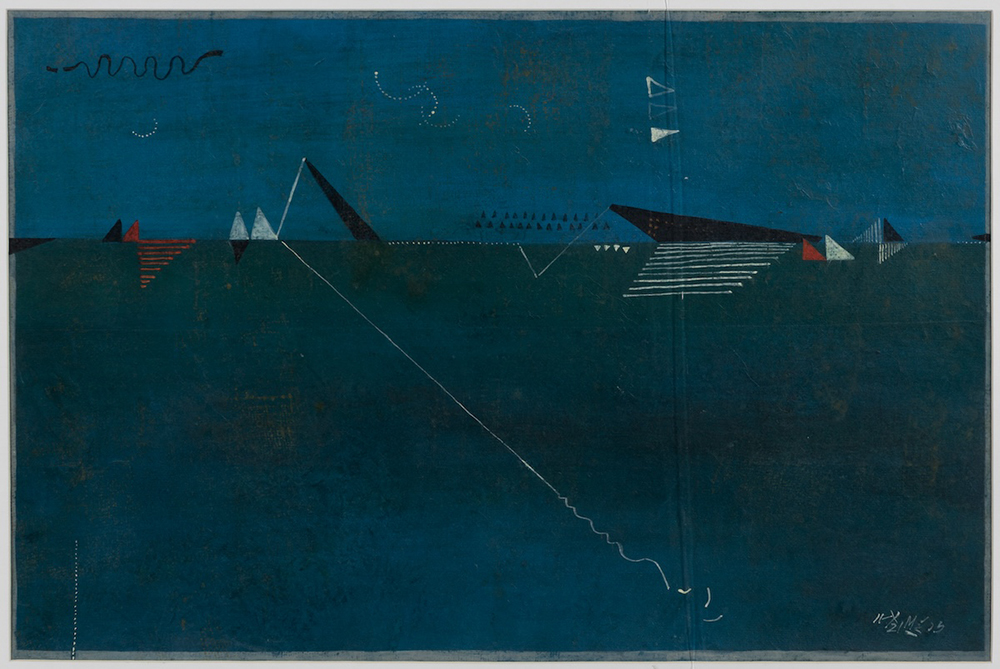

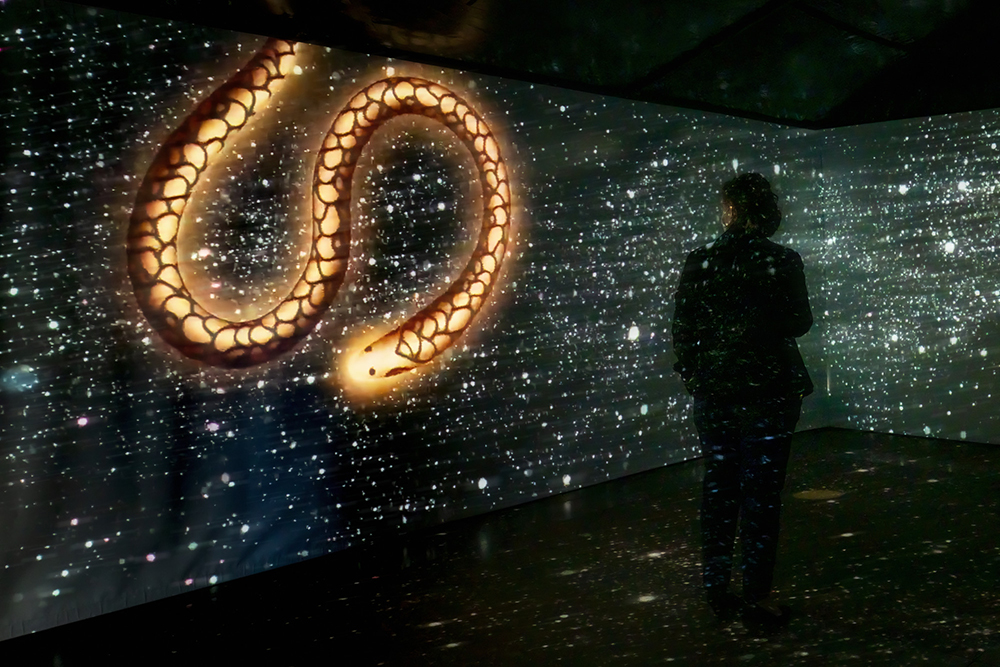
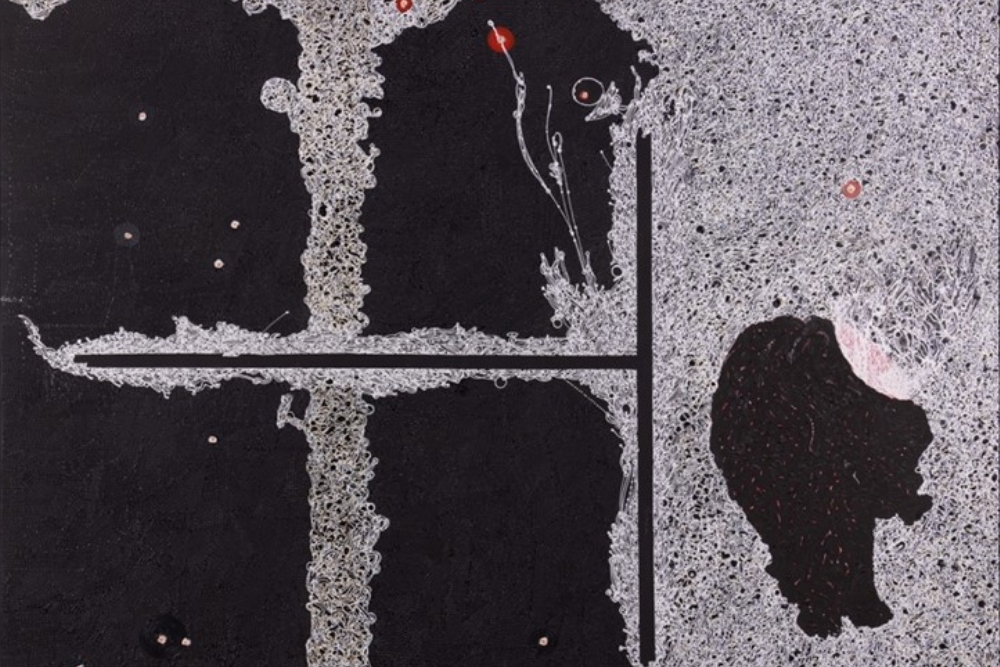
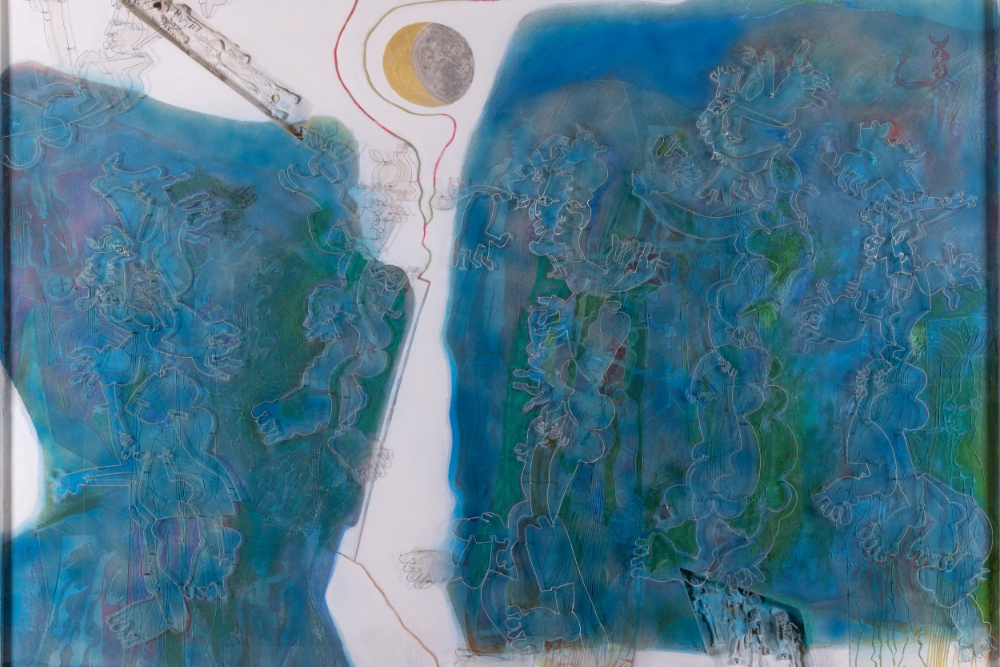
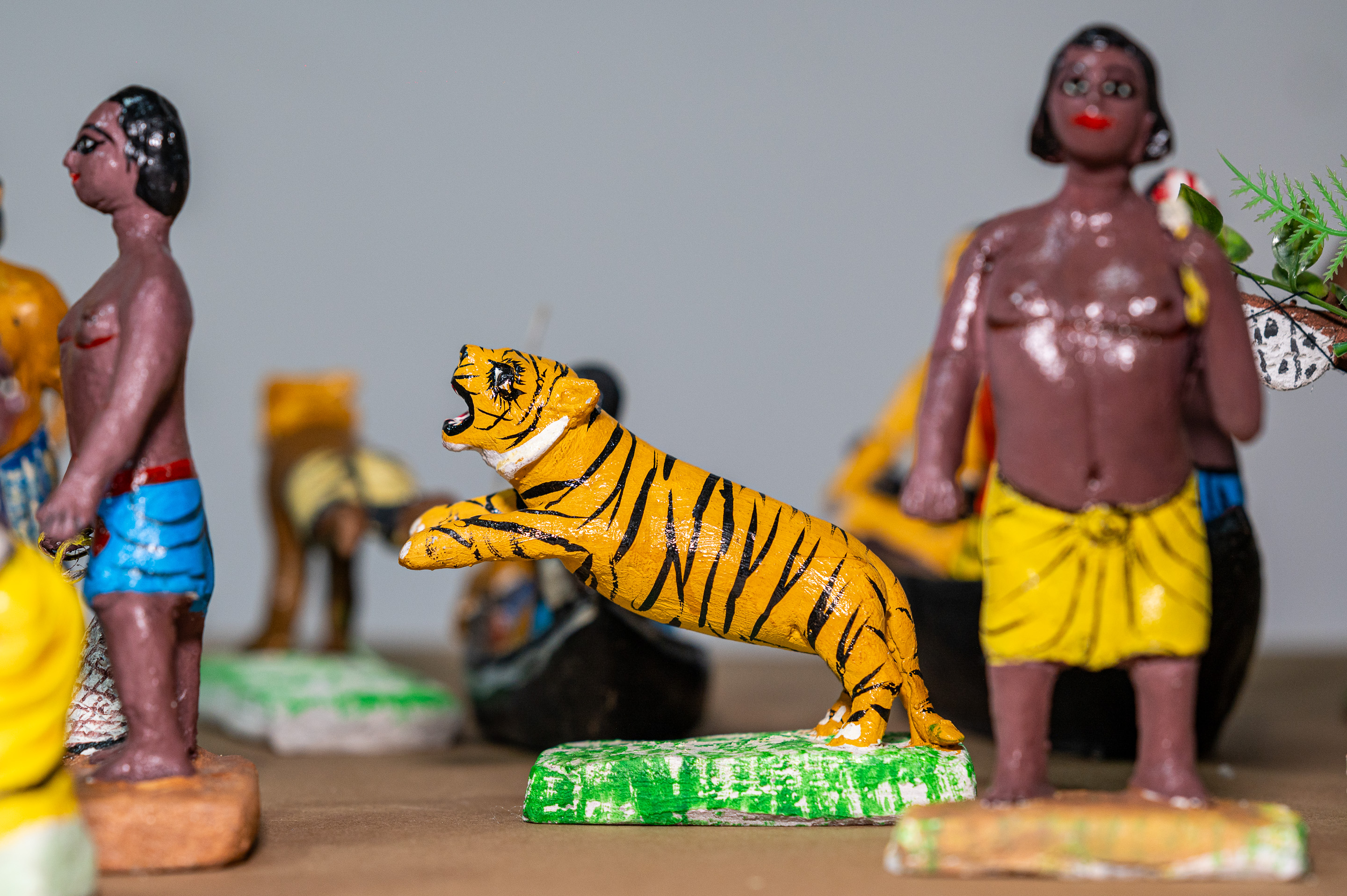



.png)




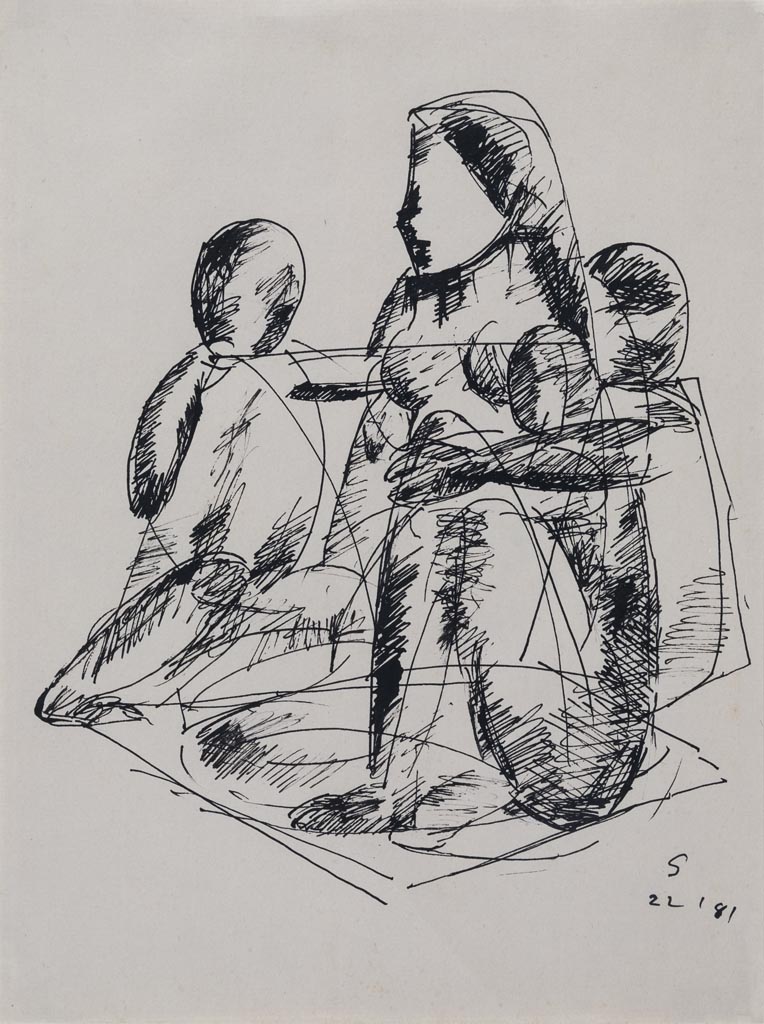

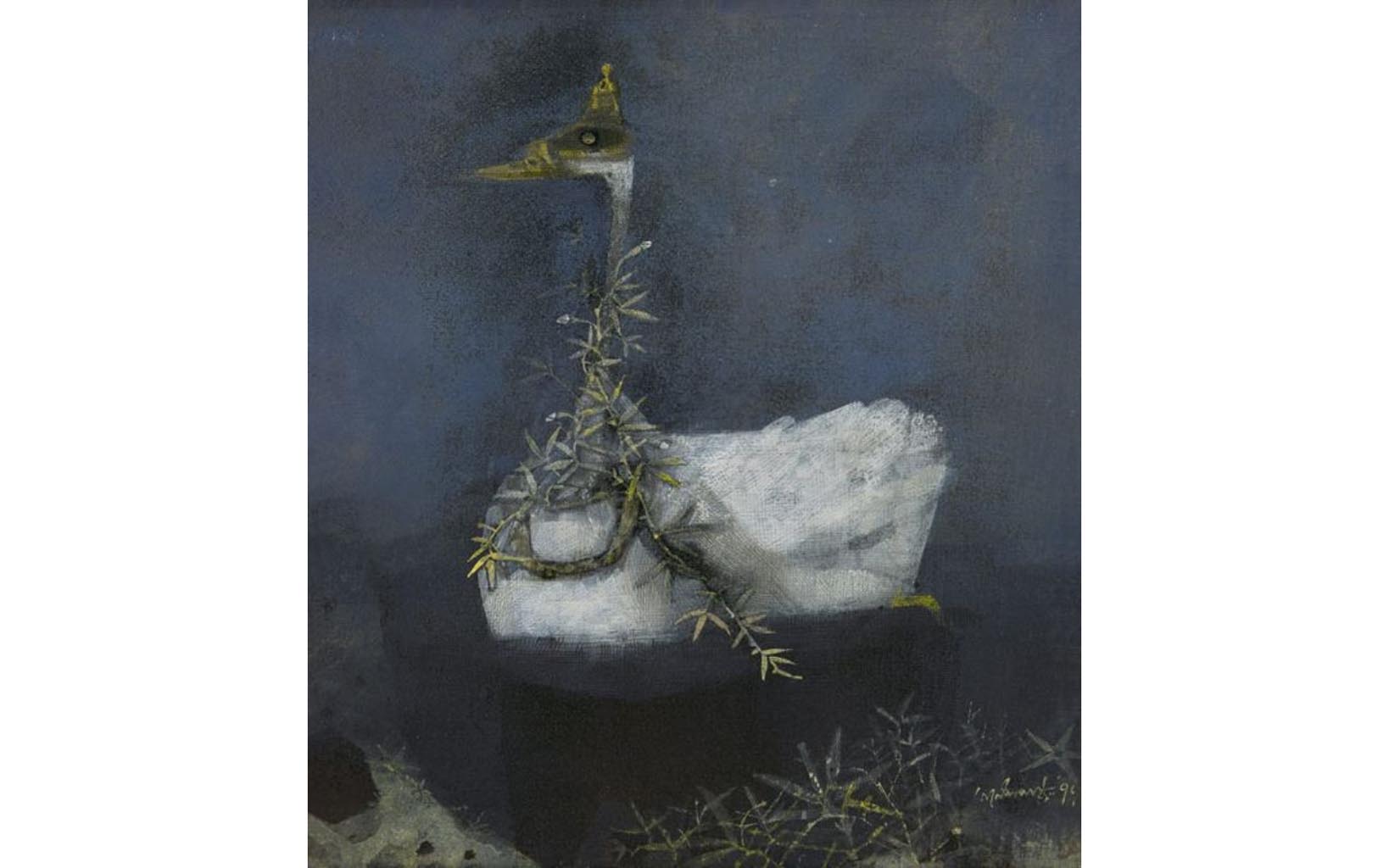











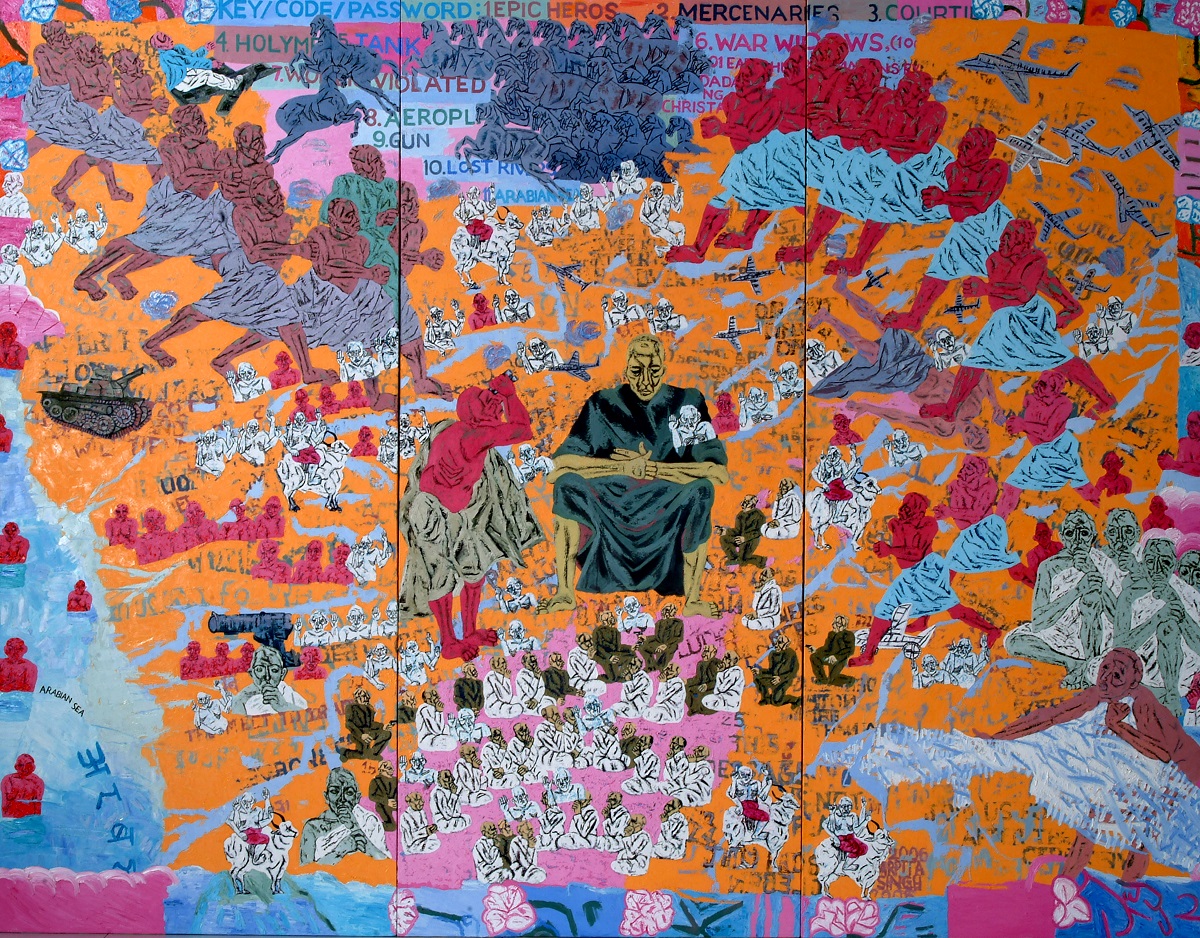
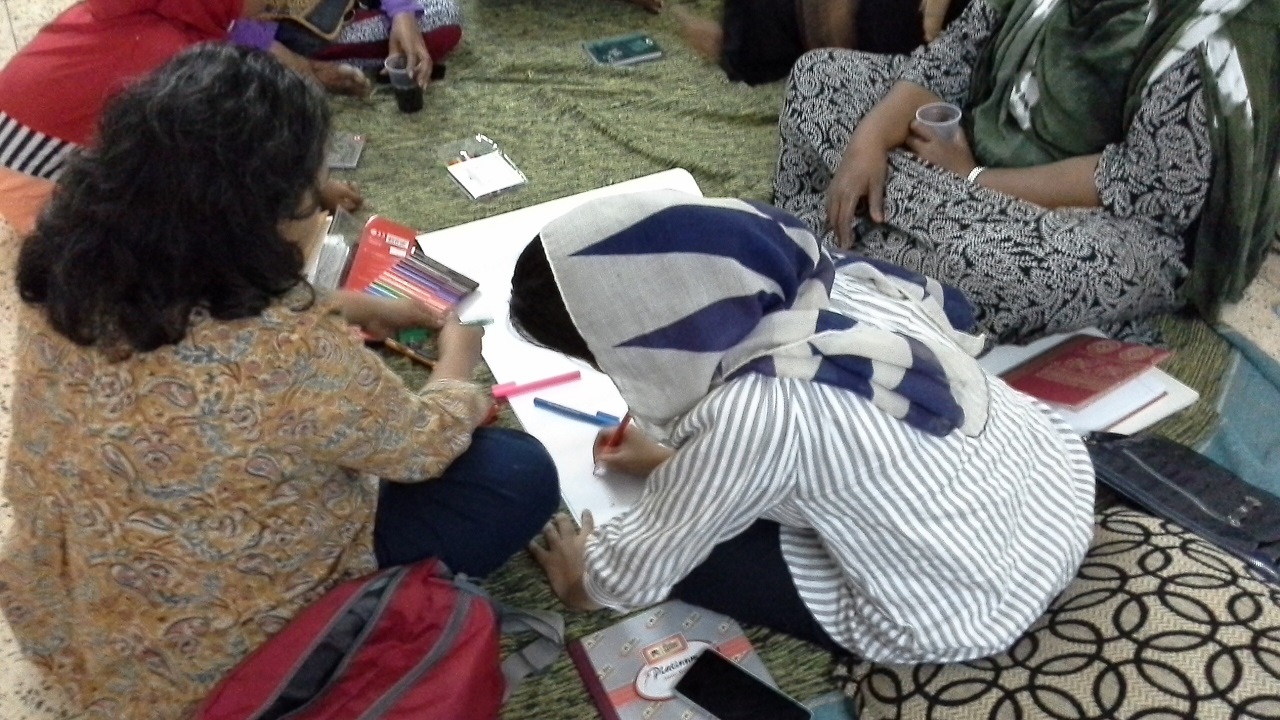

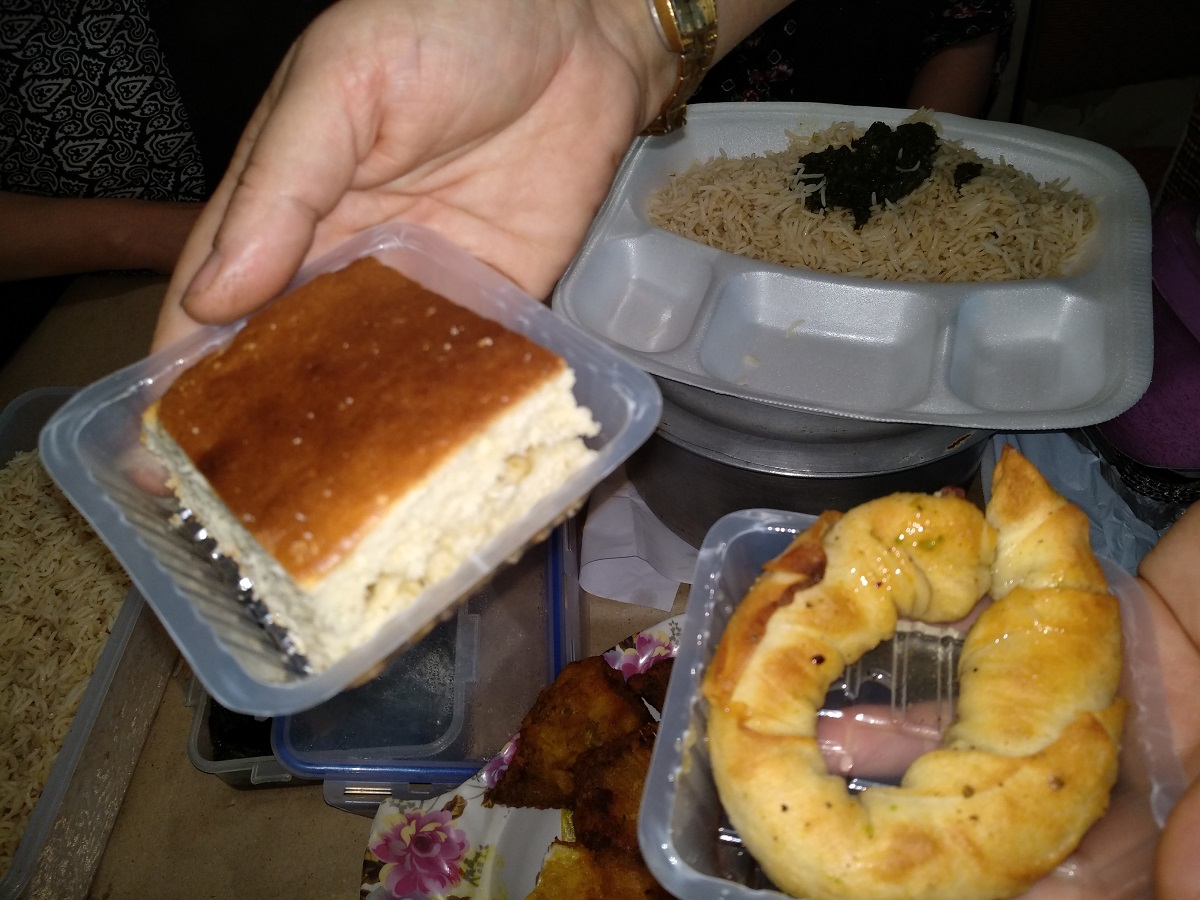
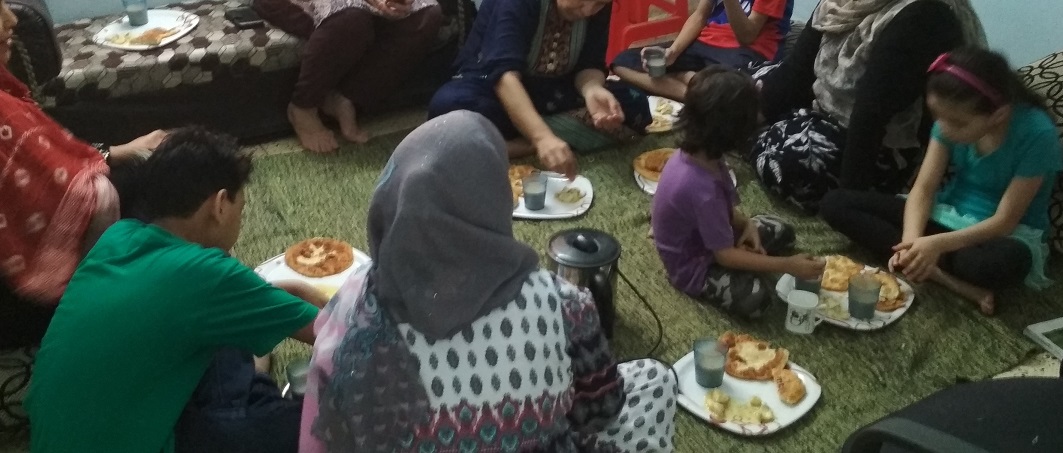
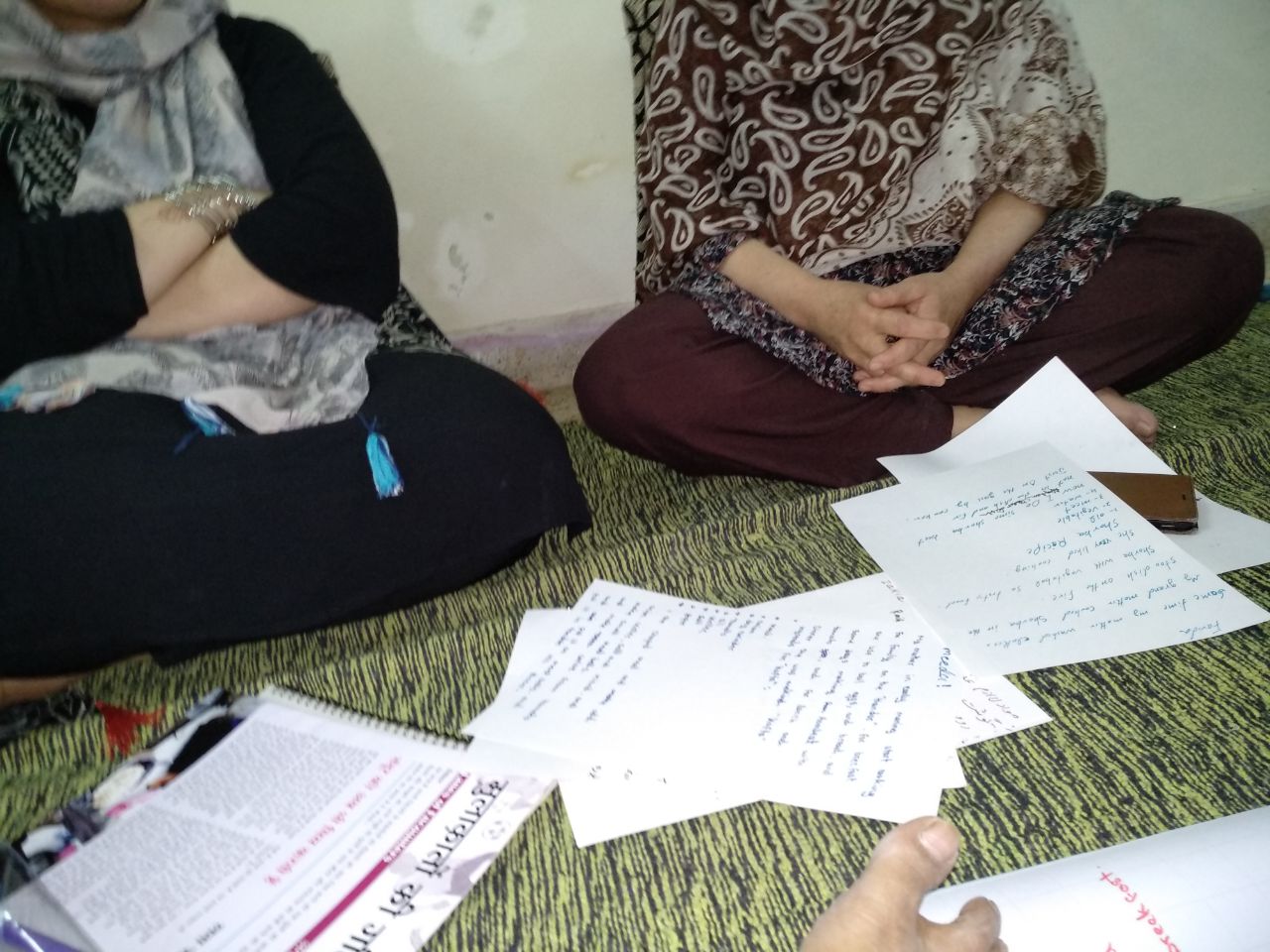


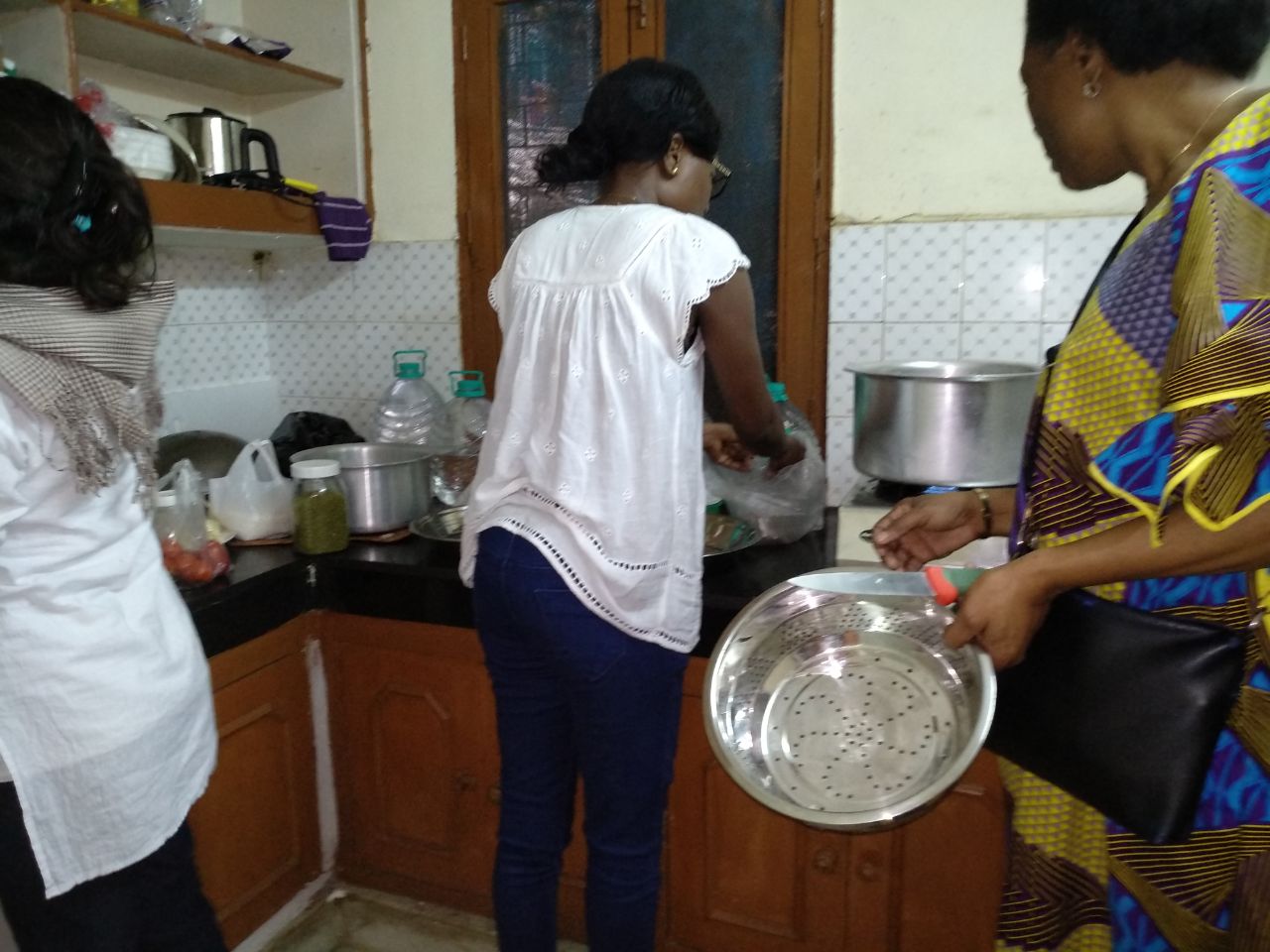
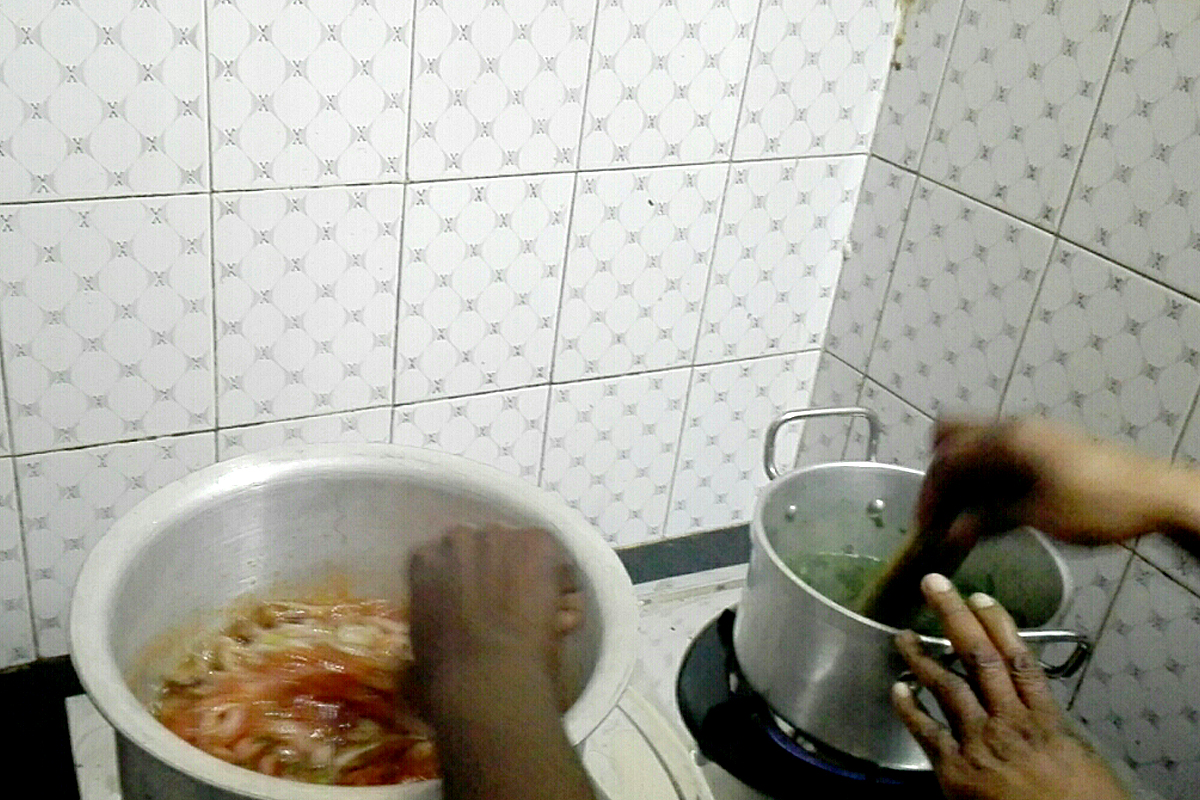
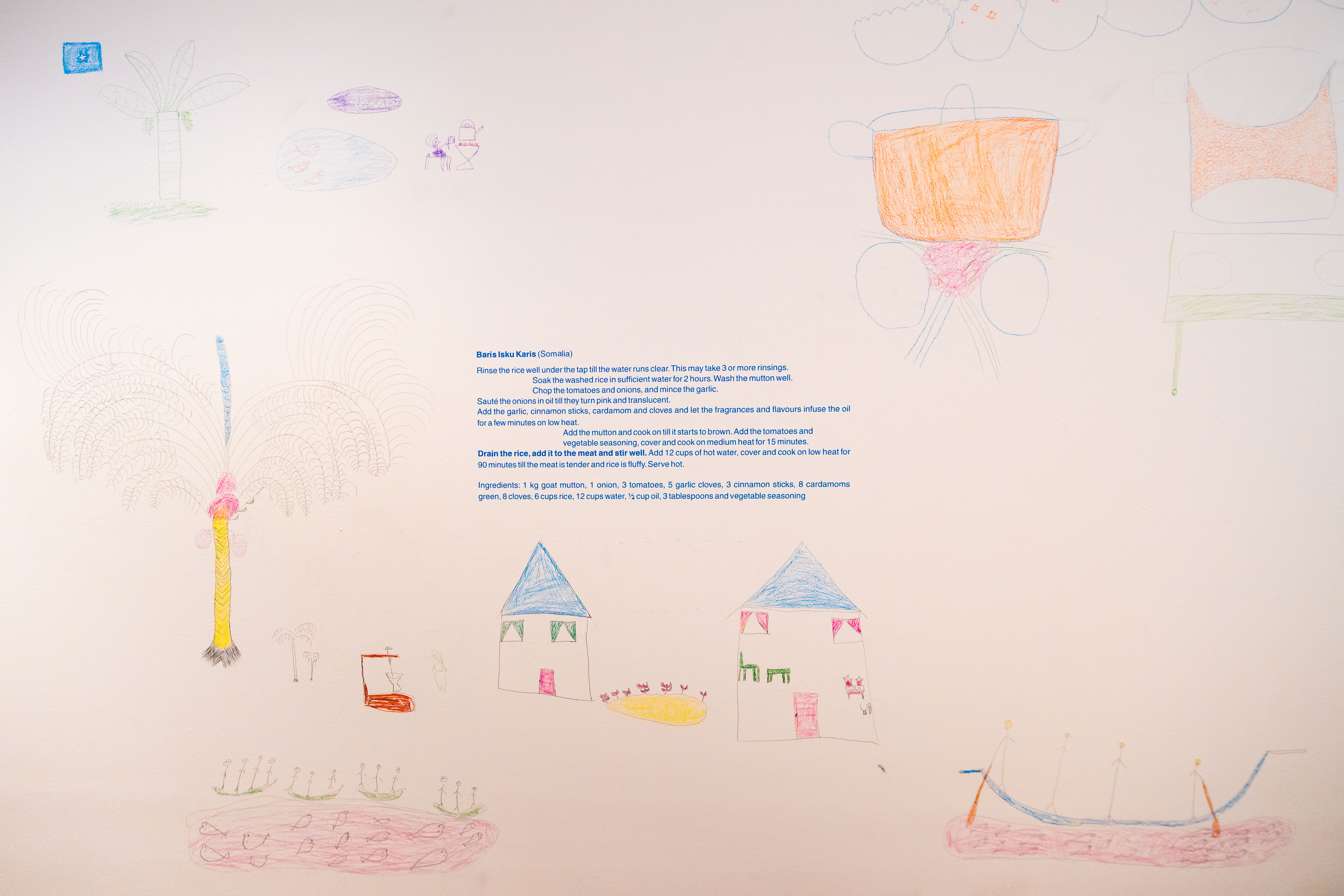
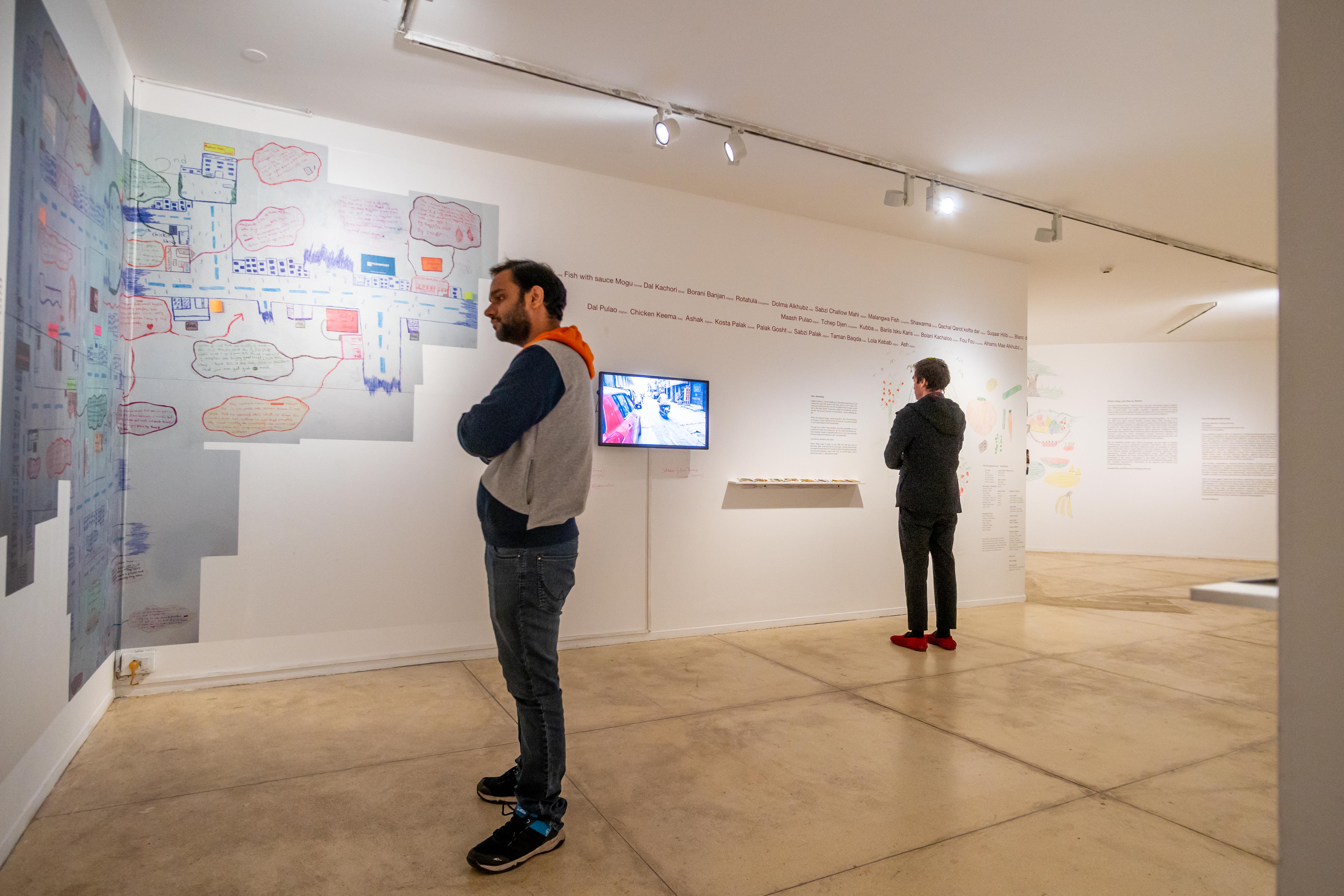

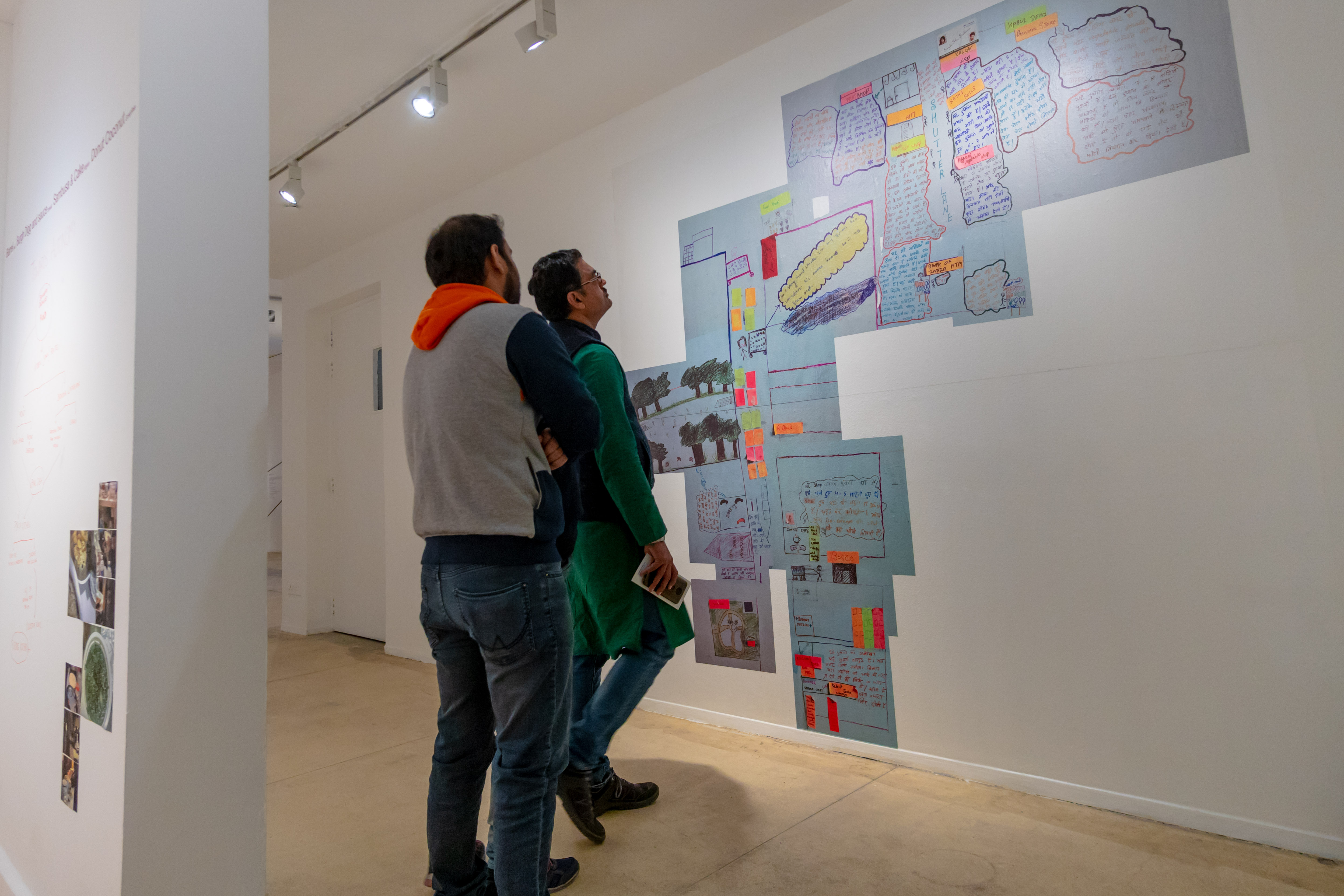
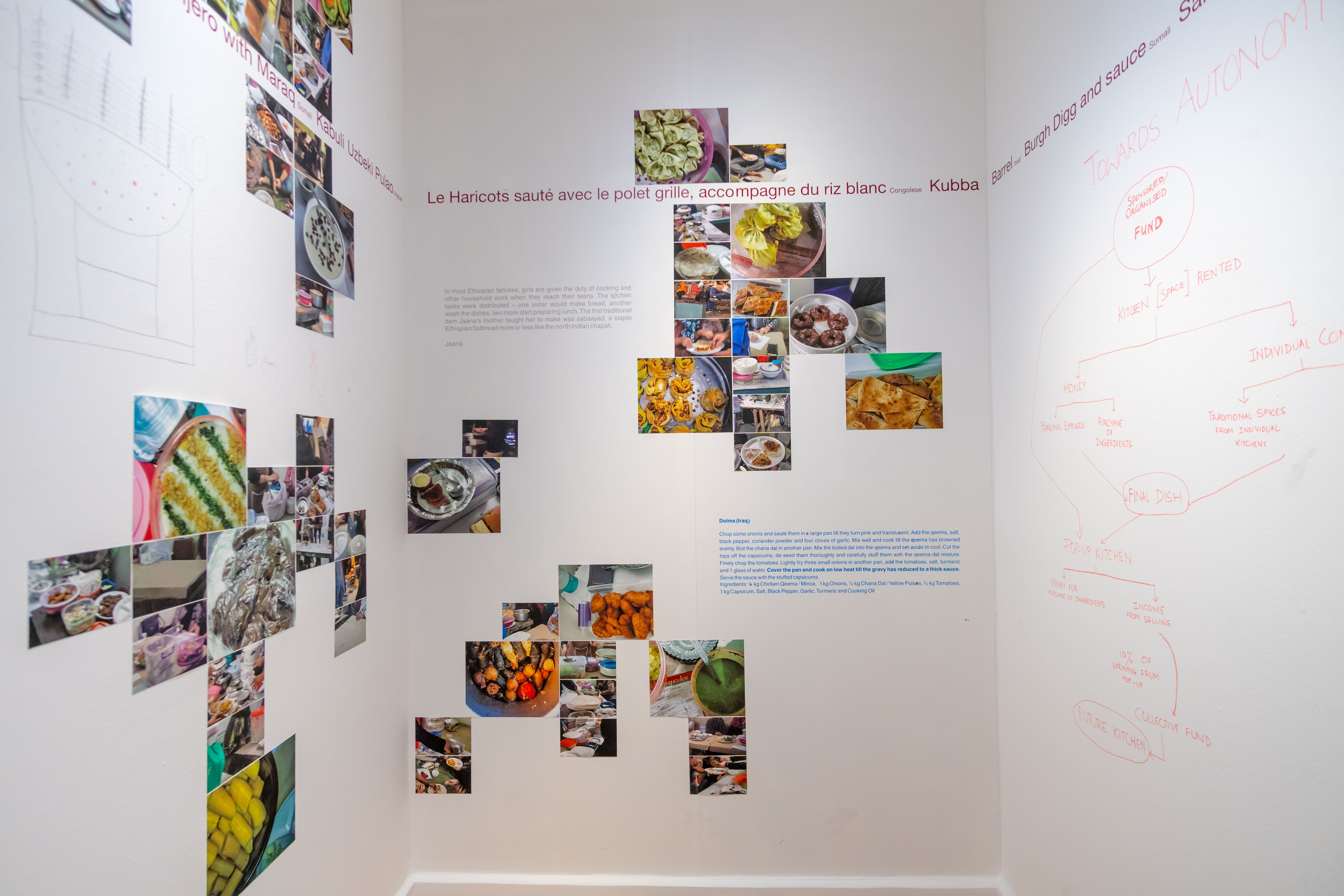

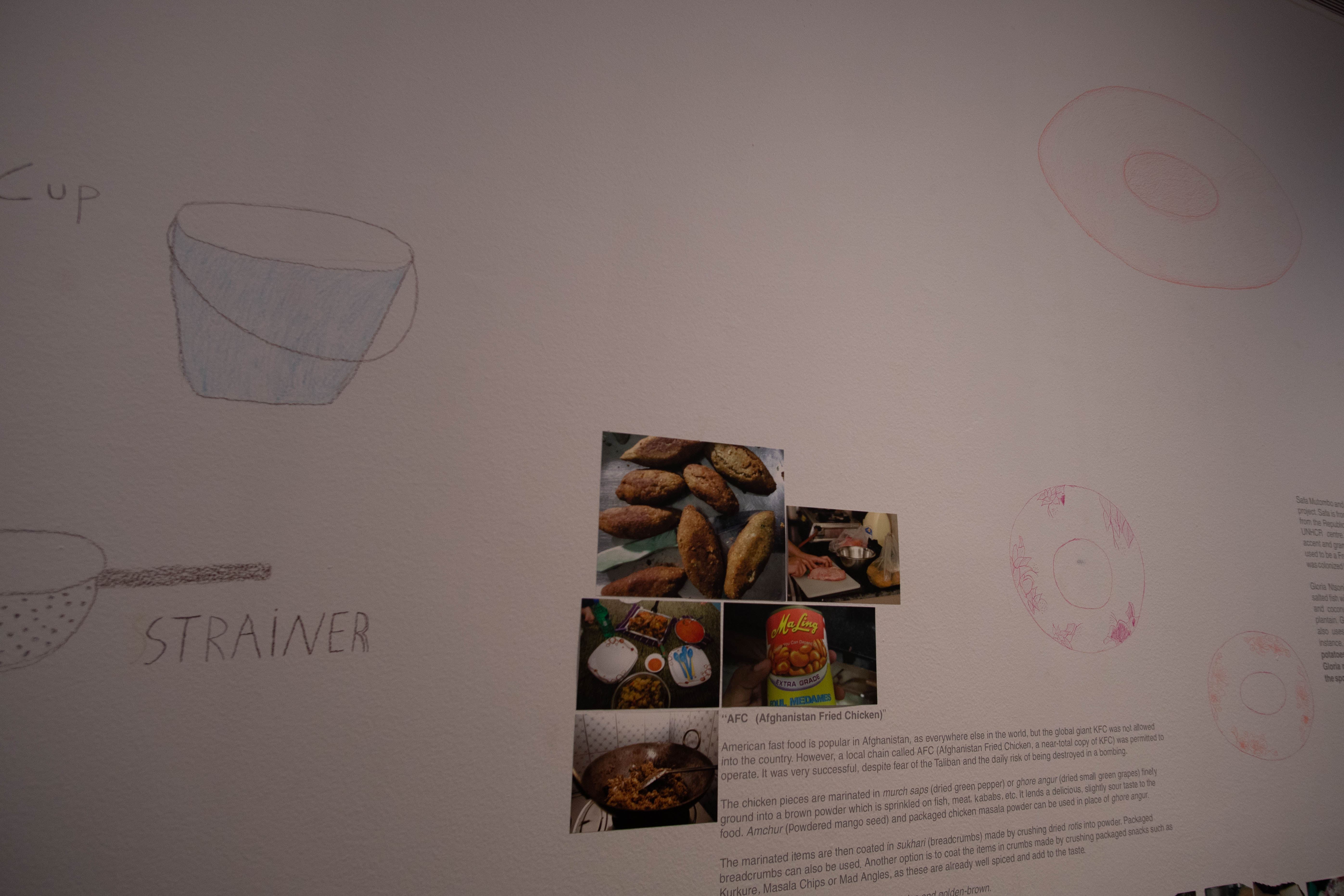
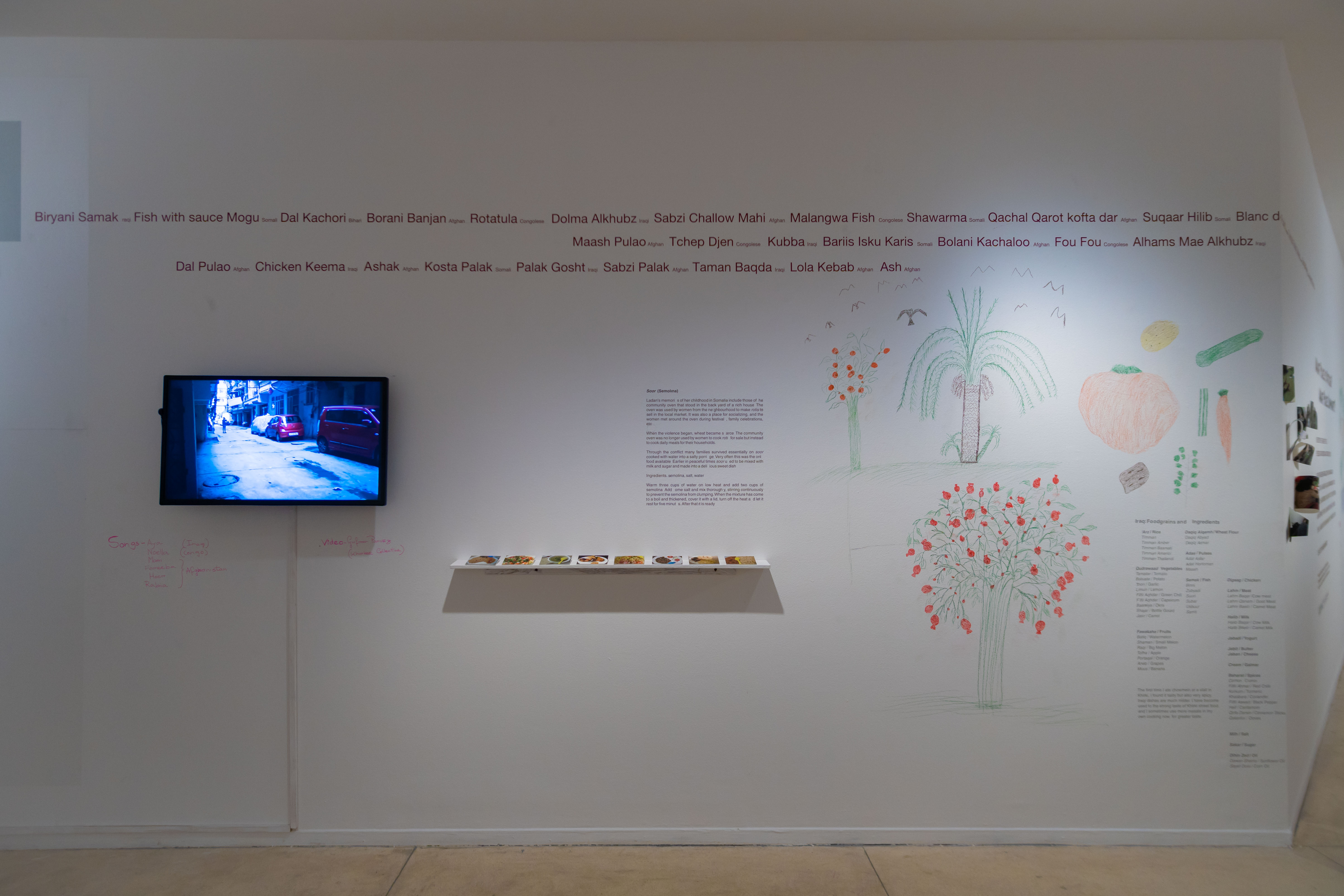
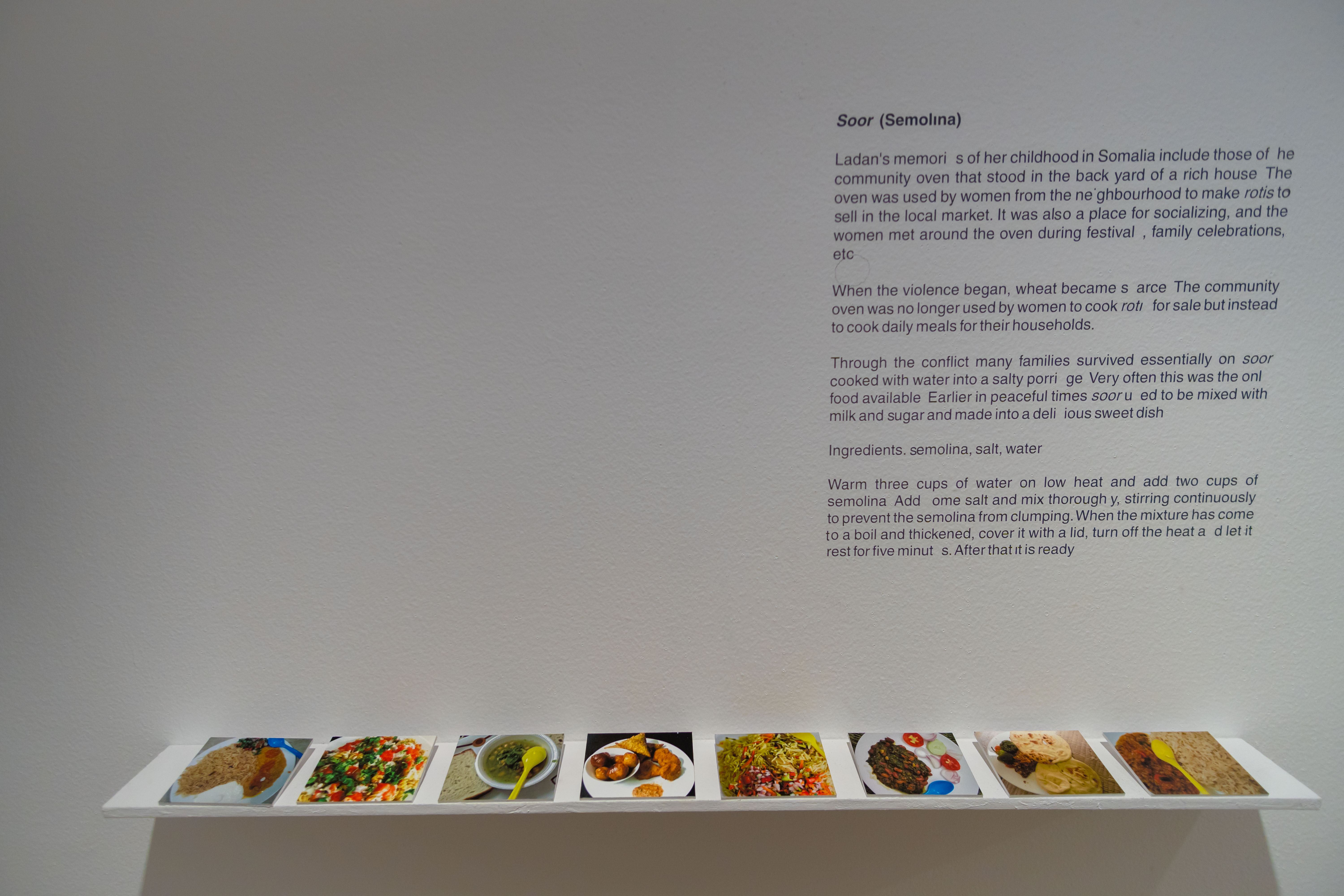

.jpg)
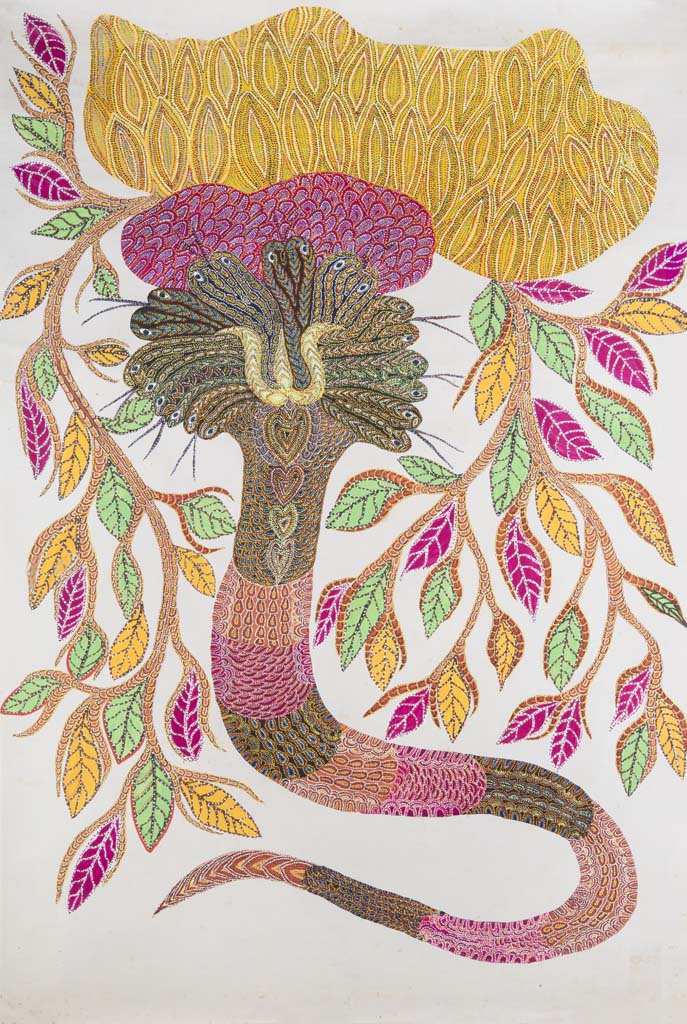


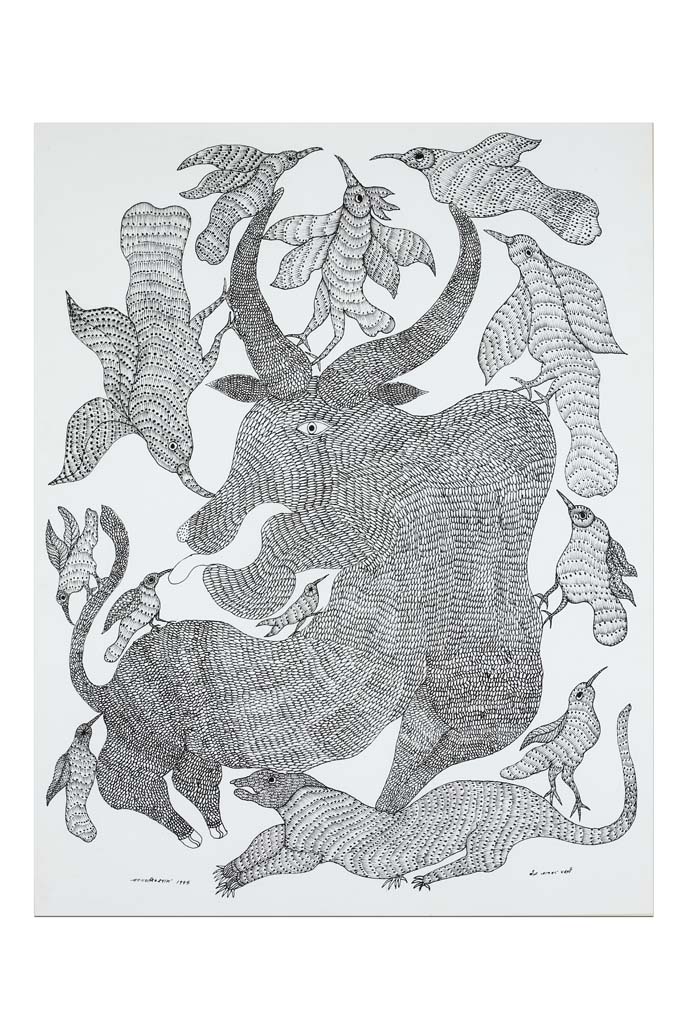

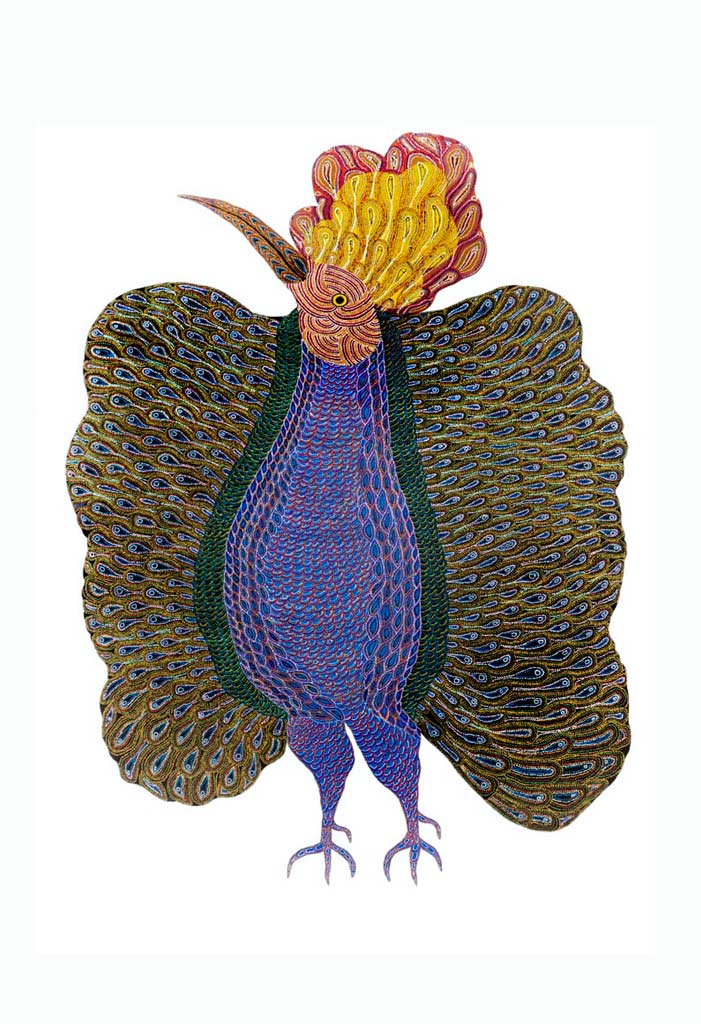
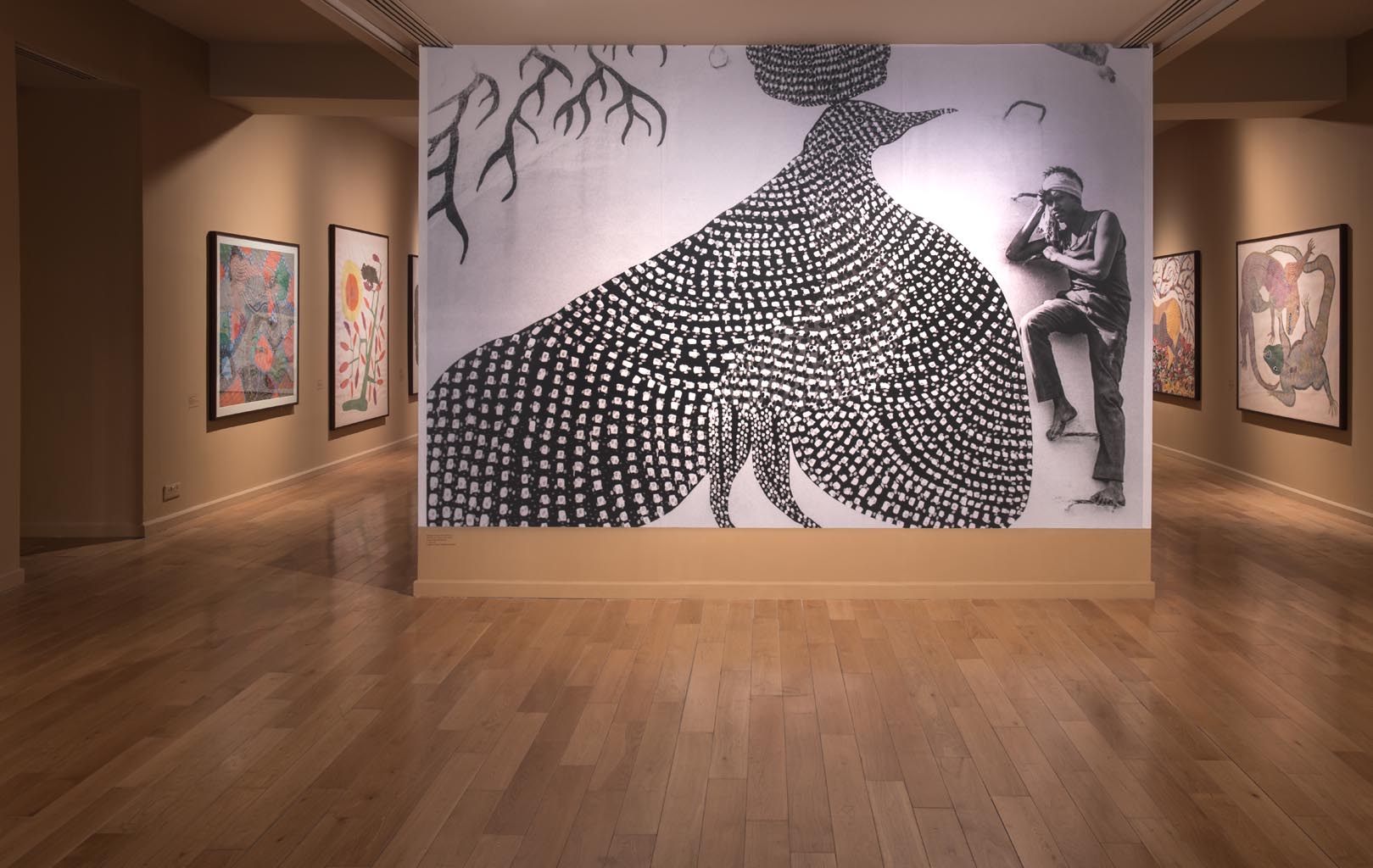

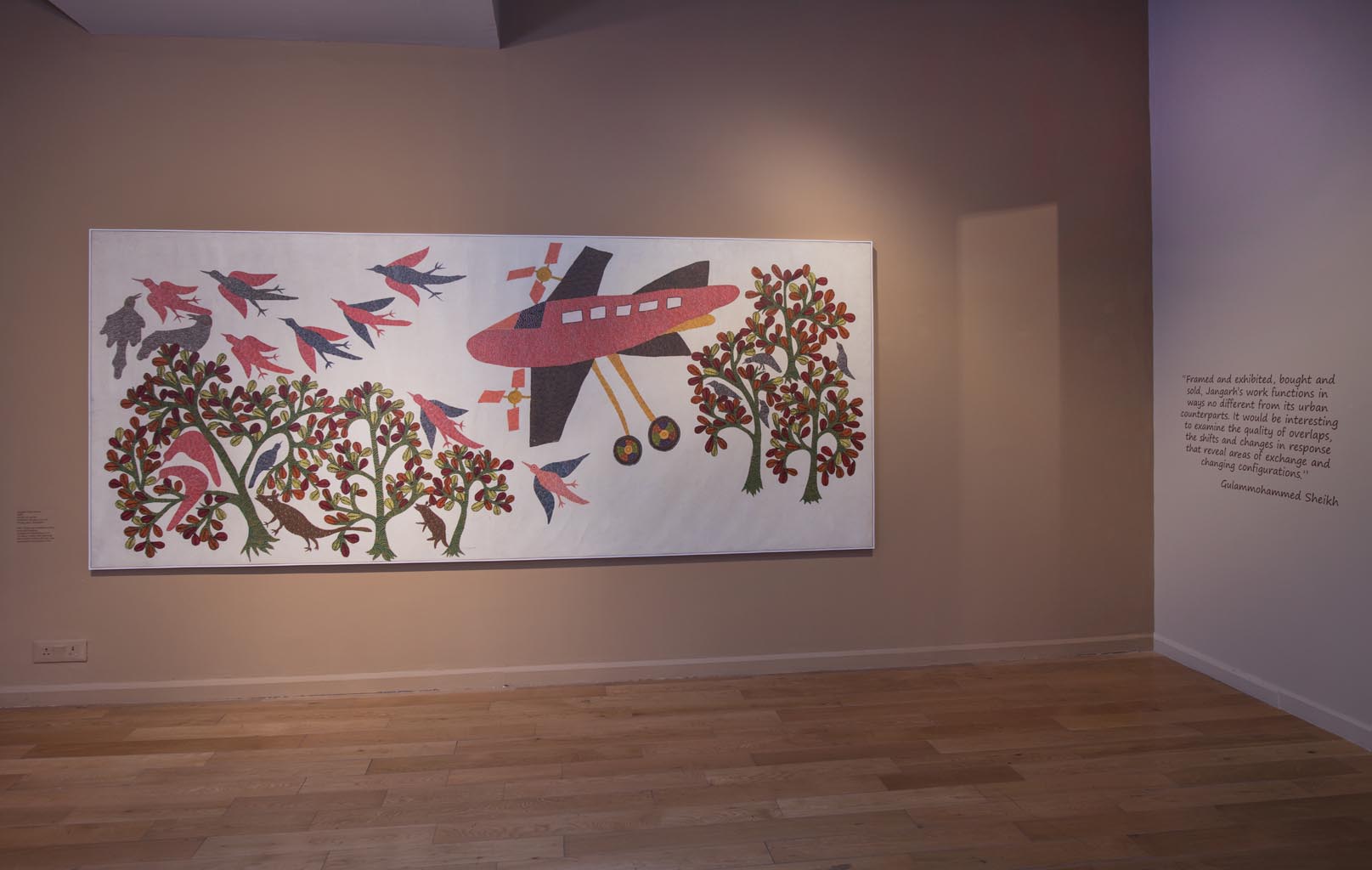
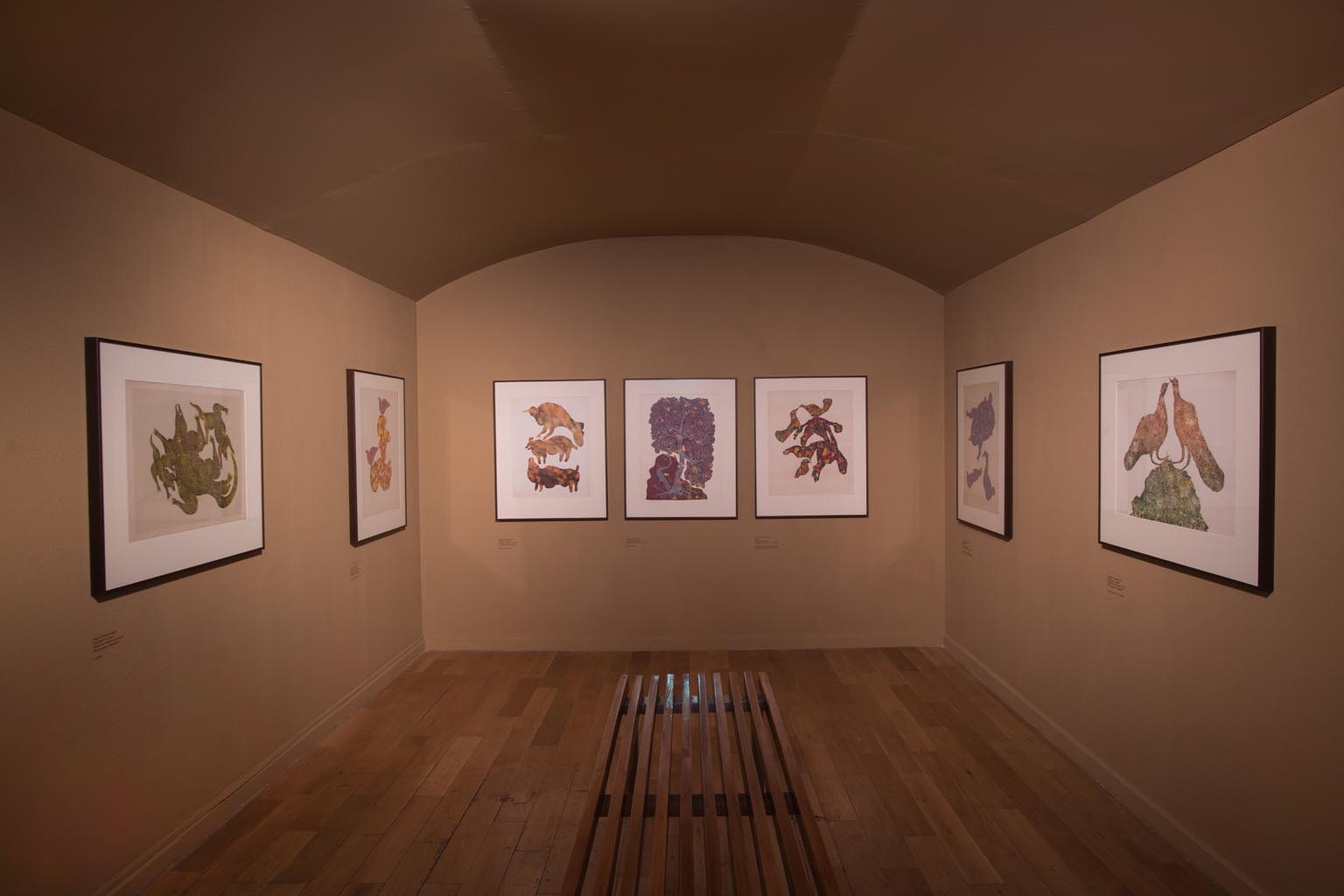
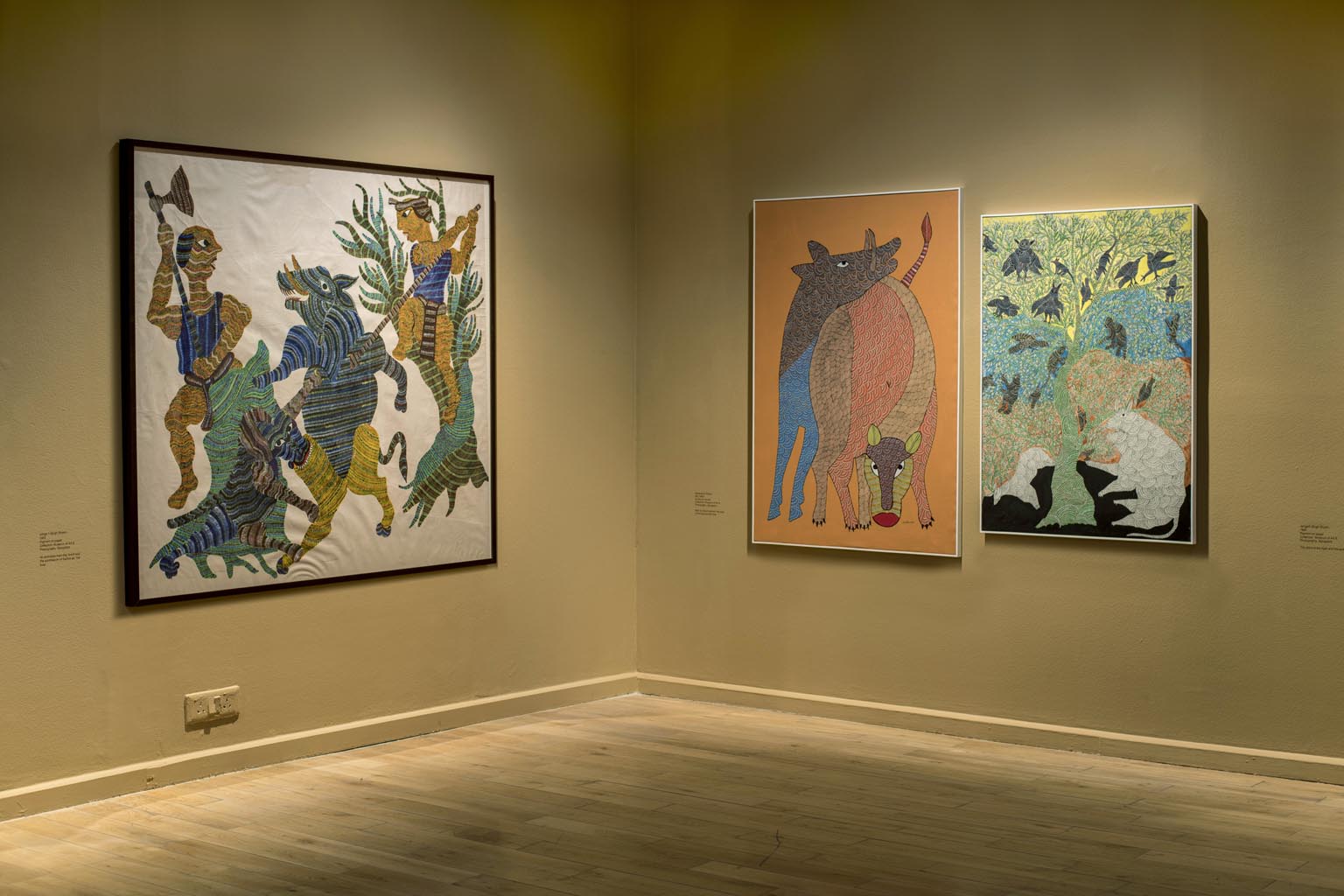
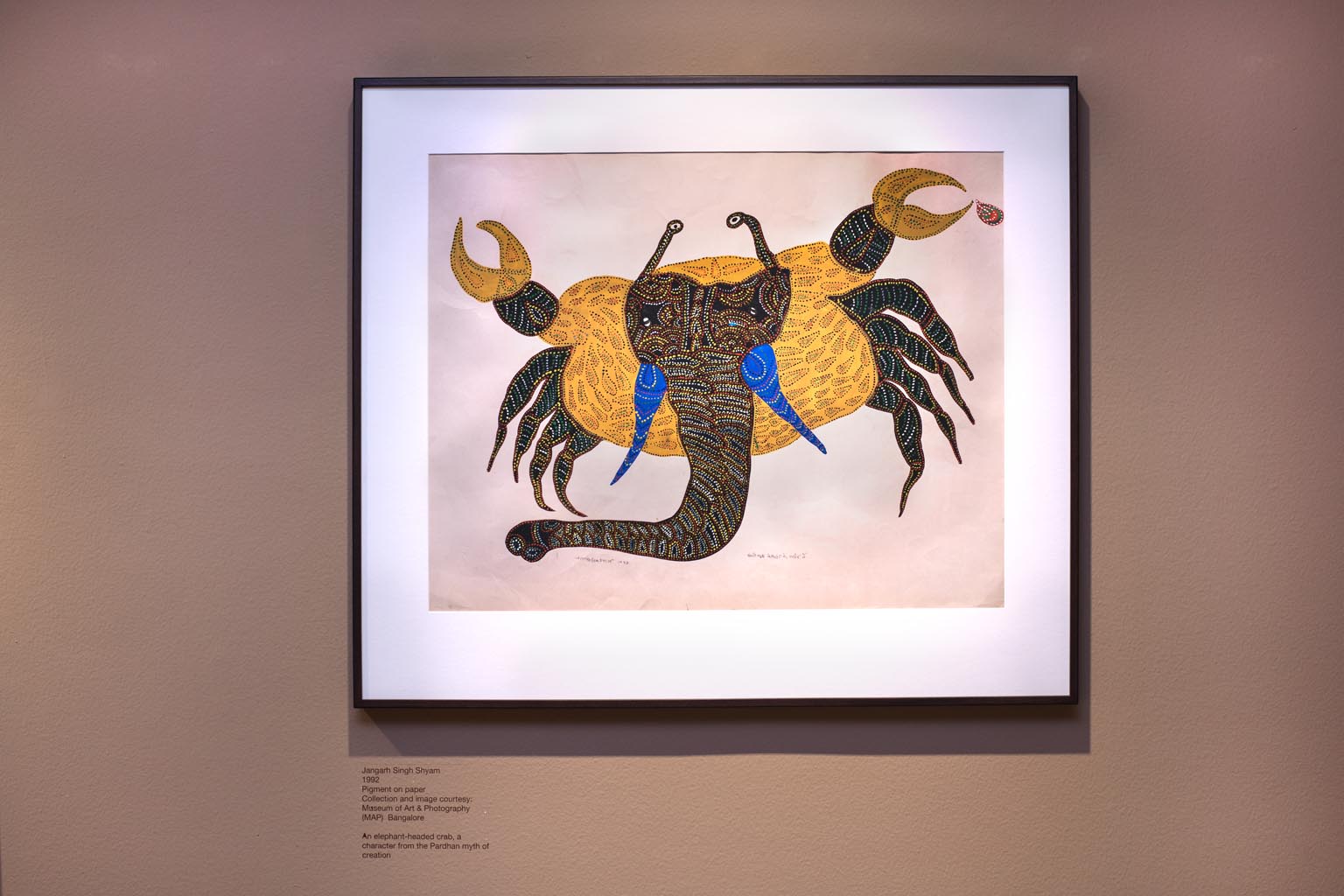

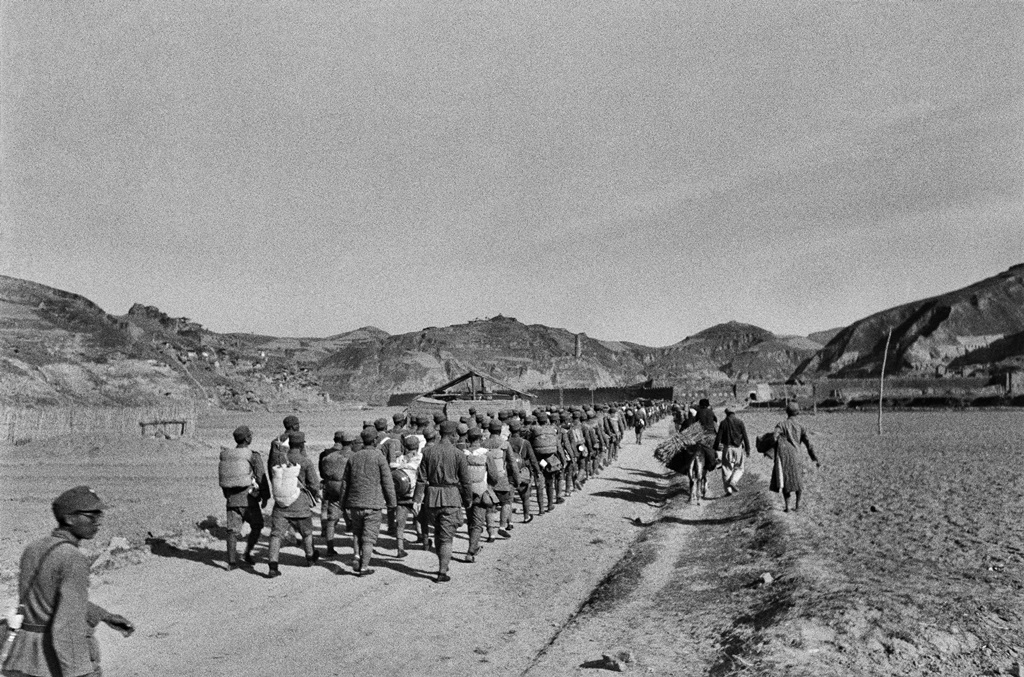

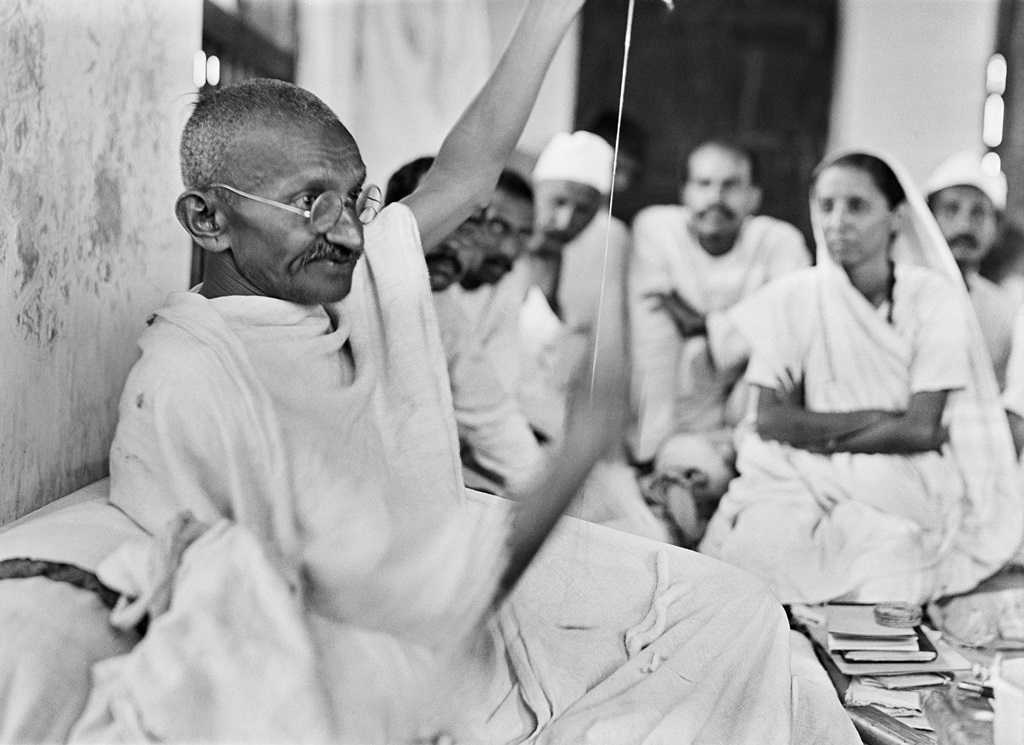

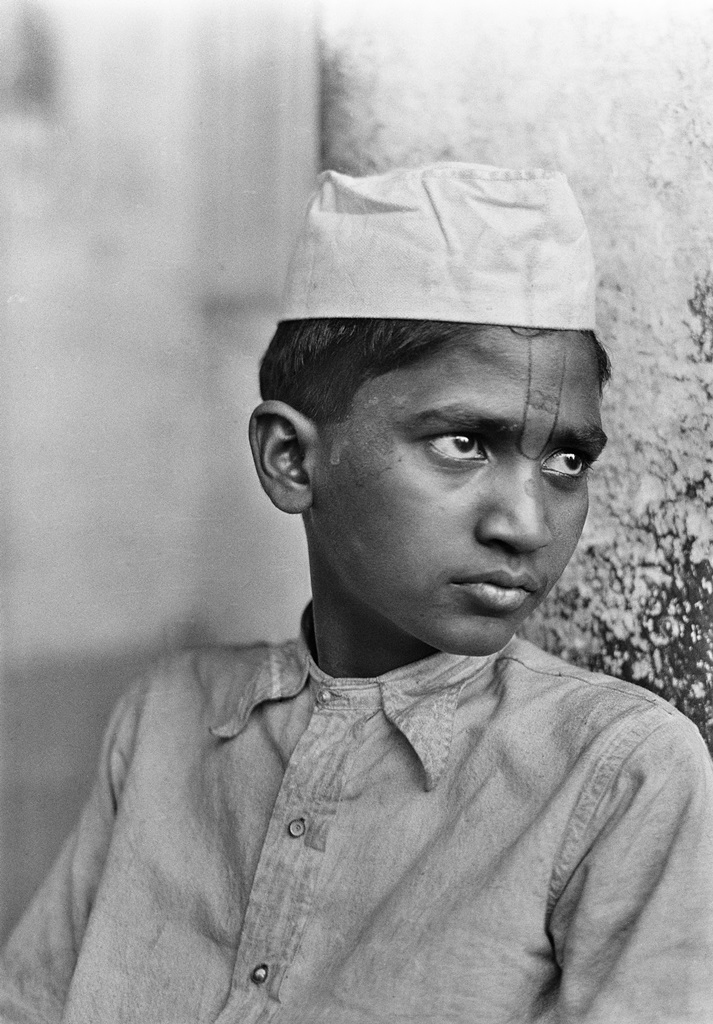

.jpg)
.jpg)
.jpg)

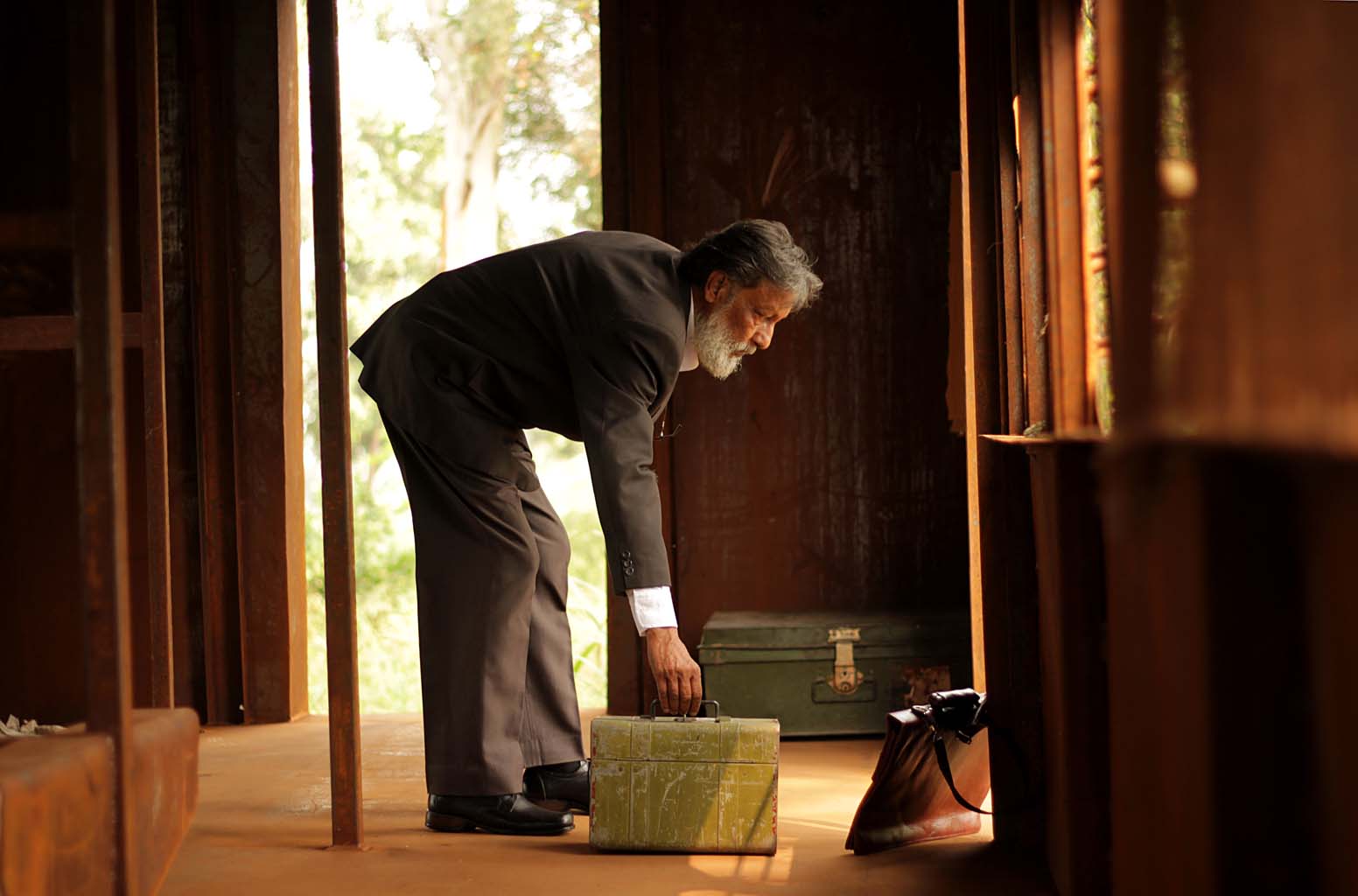
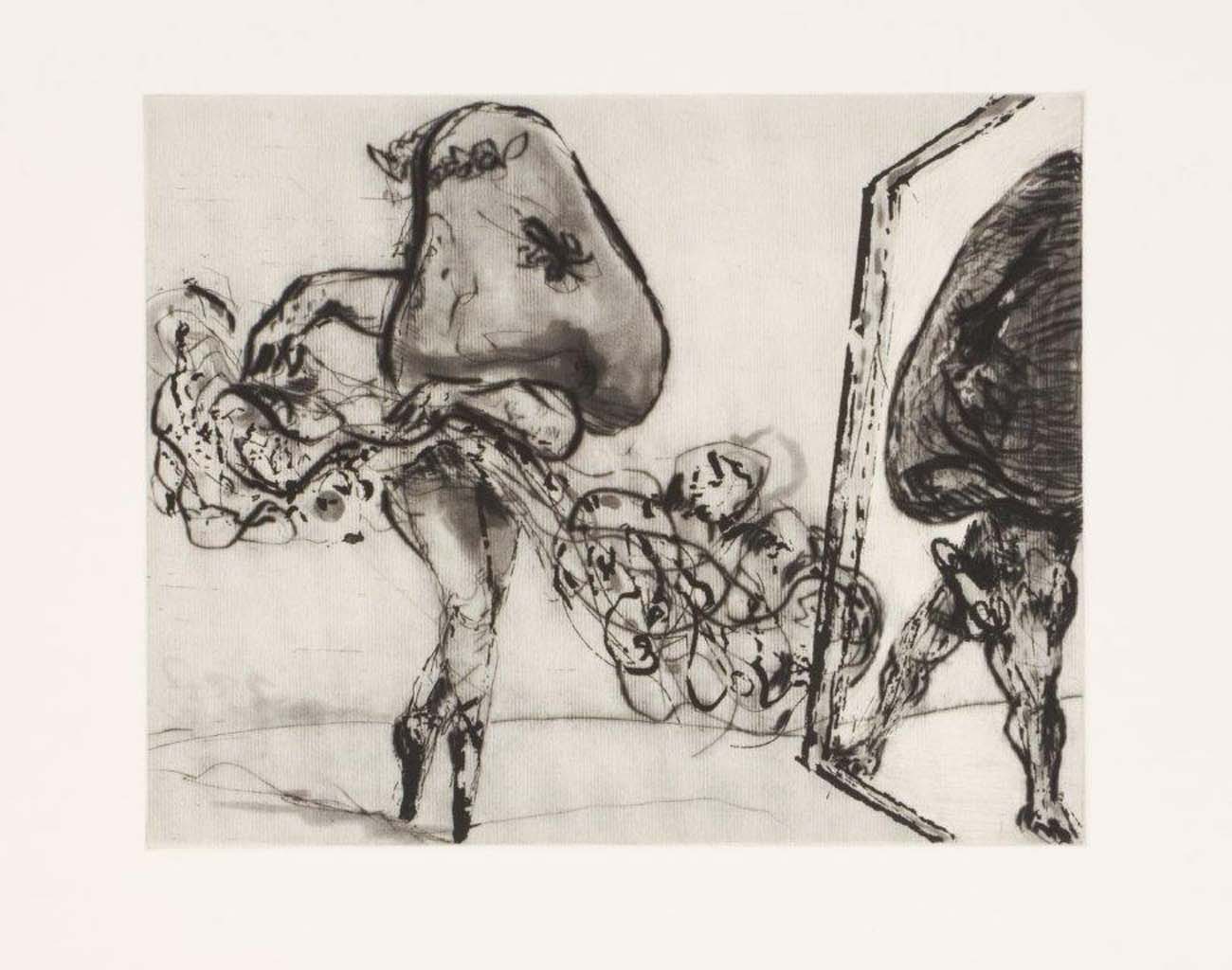
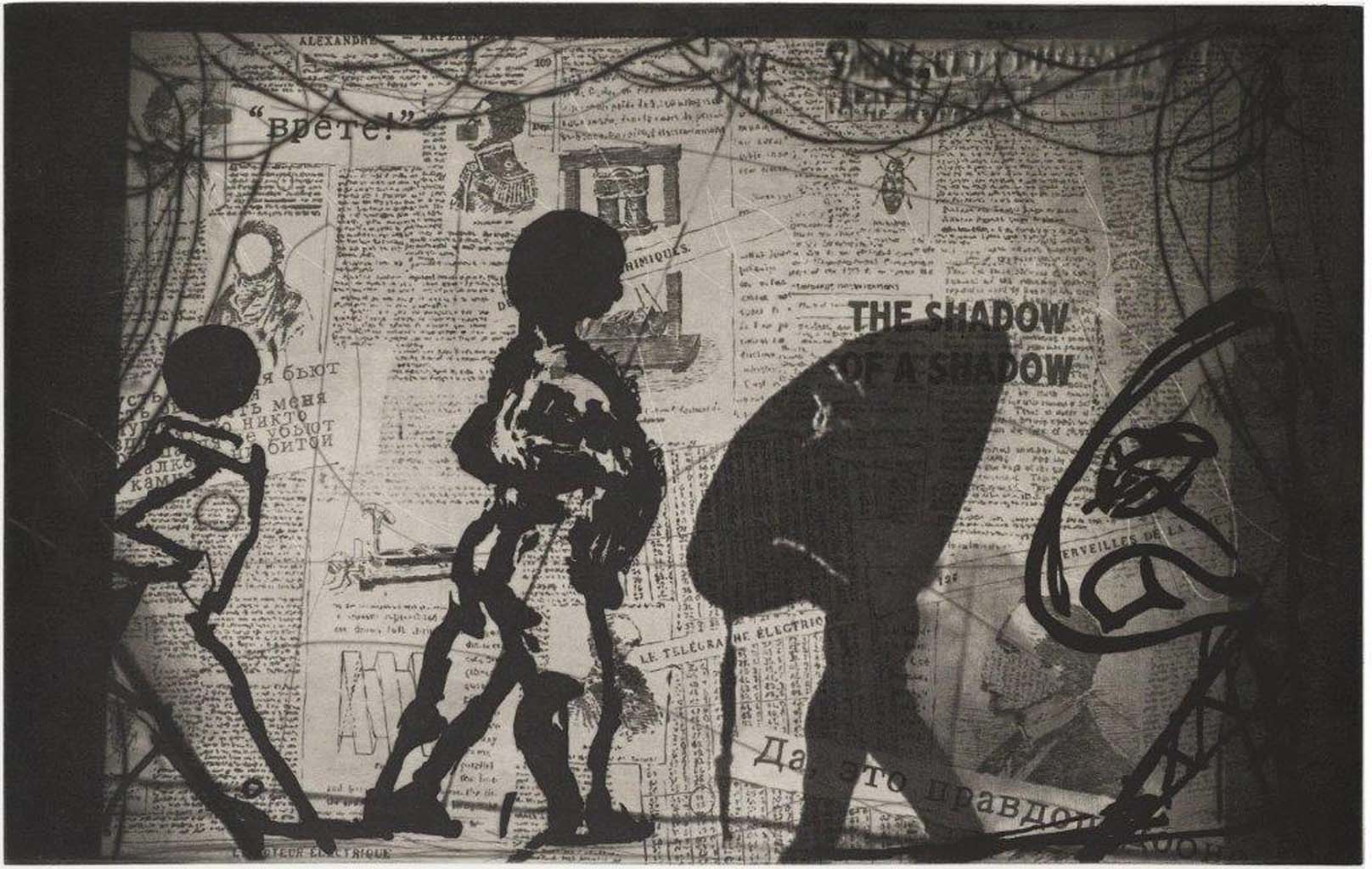

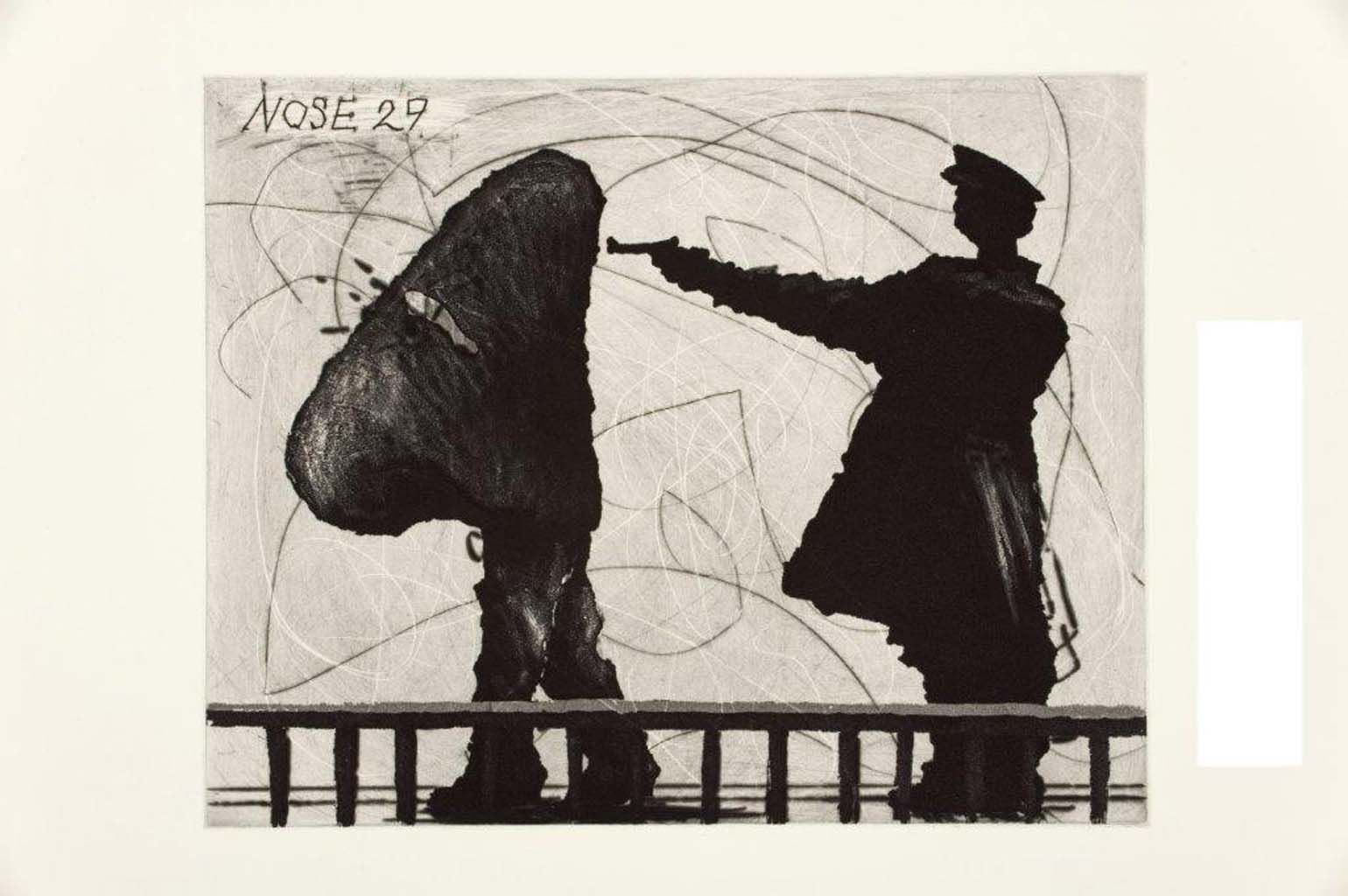

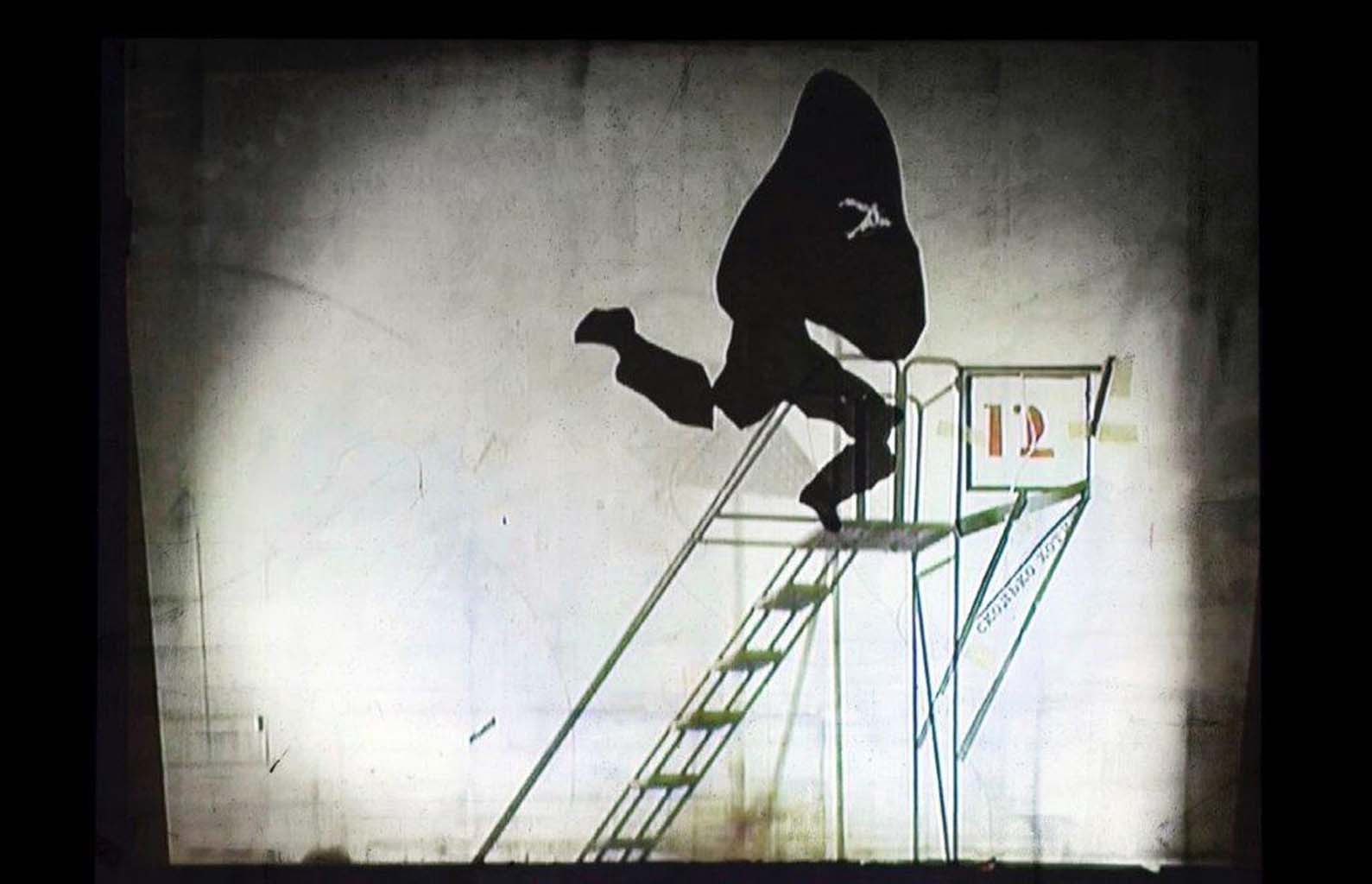

 DETAIL.jpg)
 DETAIL.jpg)
 DETAIL.jpg)
 DETAIL.jpg)
.jpg)
.jpg)

.jpg)
.jpg)
.jpg)
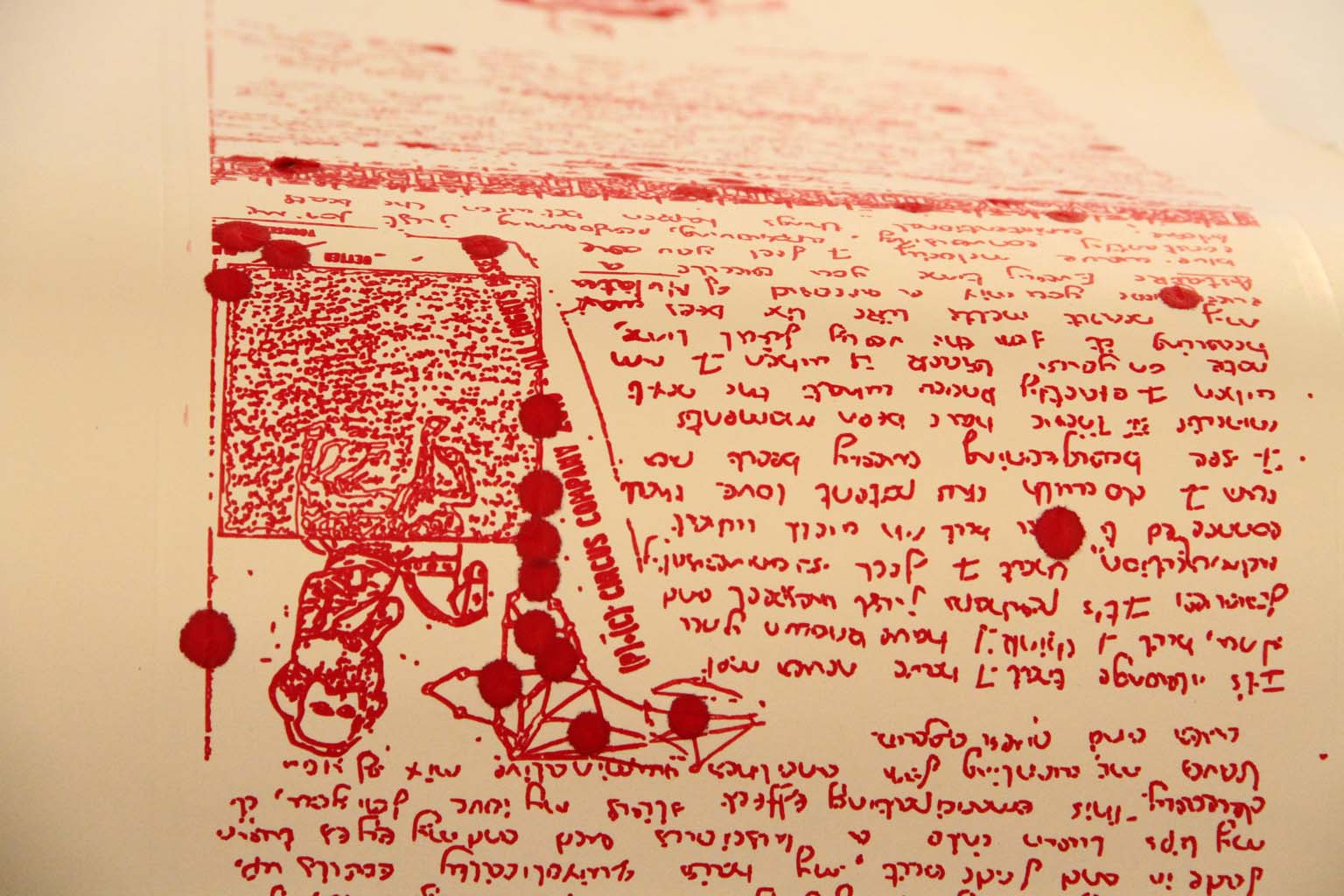
.jpg)
.jpg)
.jpg)
.jpg)
.jpg)
.jpg)
.jpg)
.jpg)
.jpg)
.jpg)
.jpg)
.jpg)
.jpg)
.jpg)


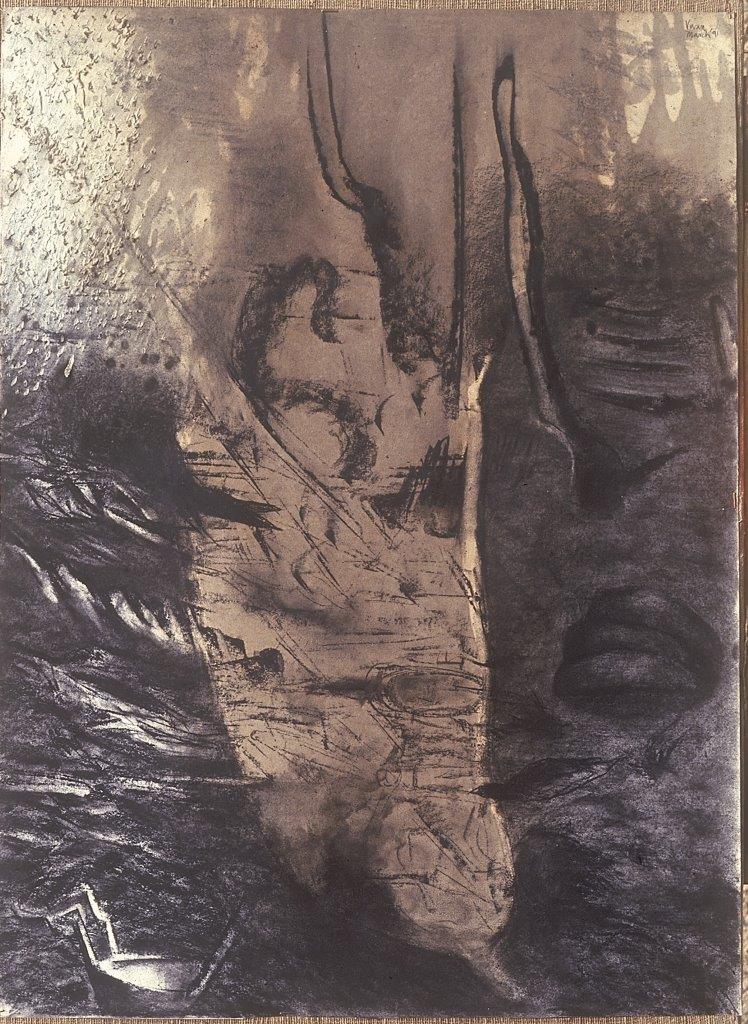

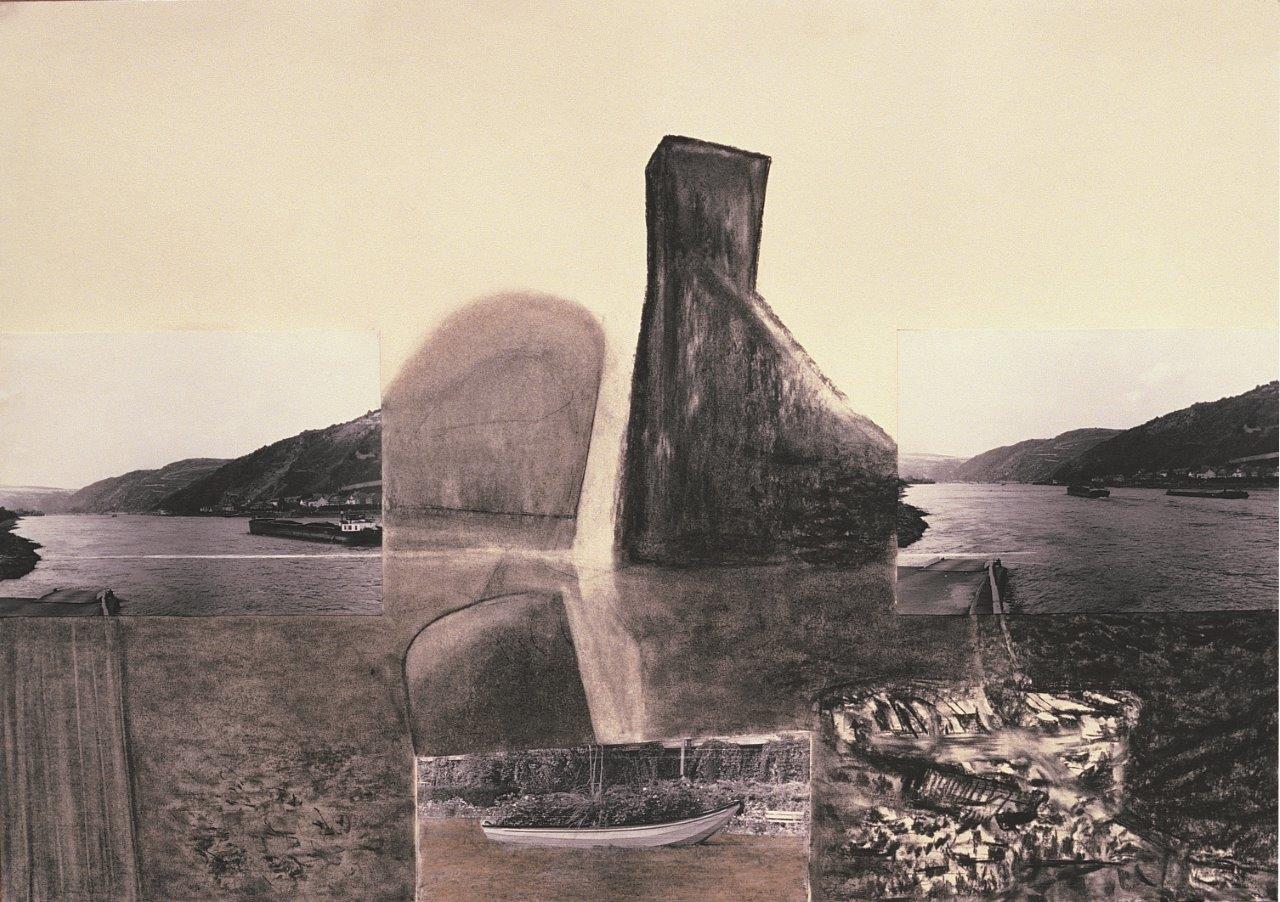

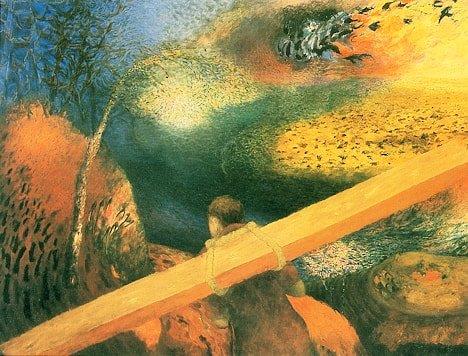

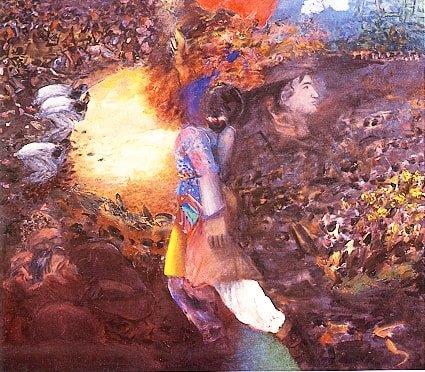
.jpg)

